We are familiar with the illusions in which we believe that we see something which only our imagination supplies.
– Hugo Münsterberg
Accustom the public to divining the whole of which they are given only a part. Make people diviners. Make them desire it.
– Robert Bresson
O what wonder to look at what one cannot see.
– Jean-Luc Godard
I. Viewing the Invisible, Hearing the Inaudible: Tracing an Aesthetic Principle
The producer and his director pensively enter the screening room of their Hollywood studio. Jonathan Shields (Kirk Douglas) and Fred Amiel (Barry Sullivan) are planning a horror movie about fearsome cat-people that is to be called The Doom of the Cat Men. But the budget is limited. The cat-people outfits from the costume department look laughable and surely won’t achieve the desired effect among the audience. What to do? The two men sit perplexed in their chairs. Suddenly, Shields leaps up, asking, “Put five men dressed like cats on the screen – what do they look like?”
Director Amiel answers laconically: “Like five men dressed like cats.” Shields then asks what the audience of a film like this would want to see for their money at the box office. Bored, Amiel responds, “To get the pants scared off of ’em.” Now the excited producer asks his director what are people afraid of more than anything else. While Amiel hesitates with his answer, Shields rushes across the room and turns the light off: “Darkness!” Because in the darkness – as the now barely visible Shields calls out, with only his wildly gesticulating hands illuminated by a floor lamp – all sorts of things come to life.
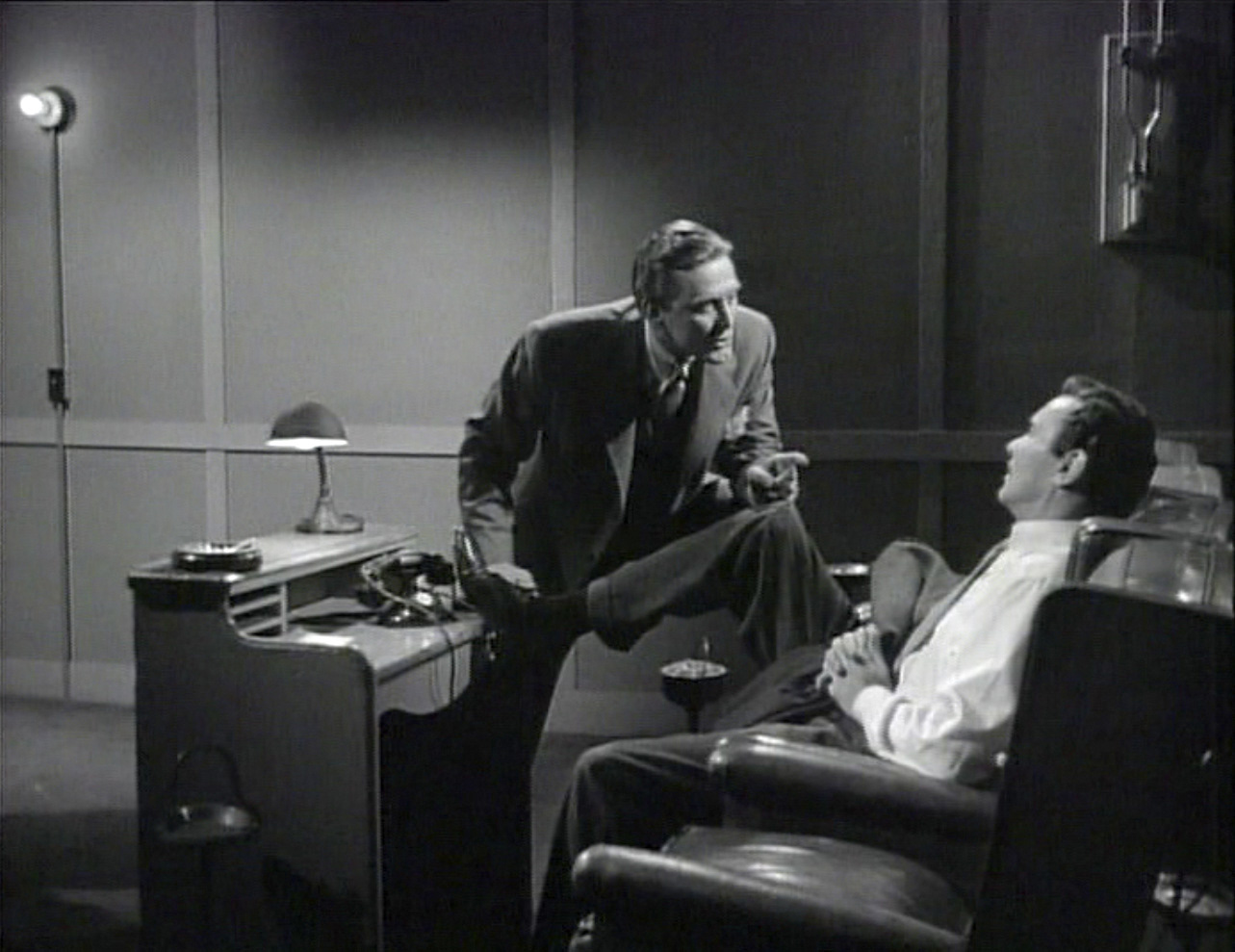
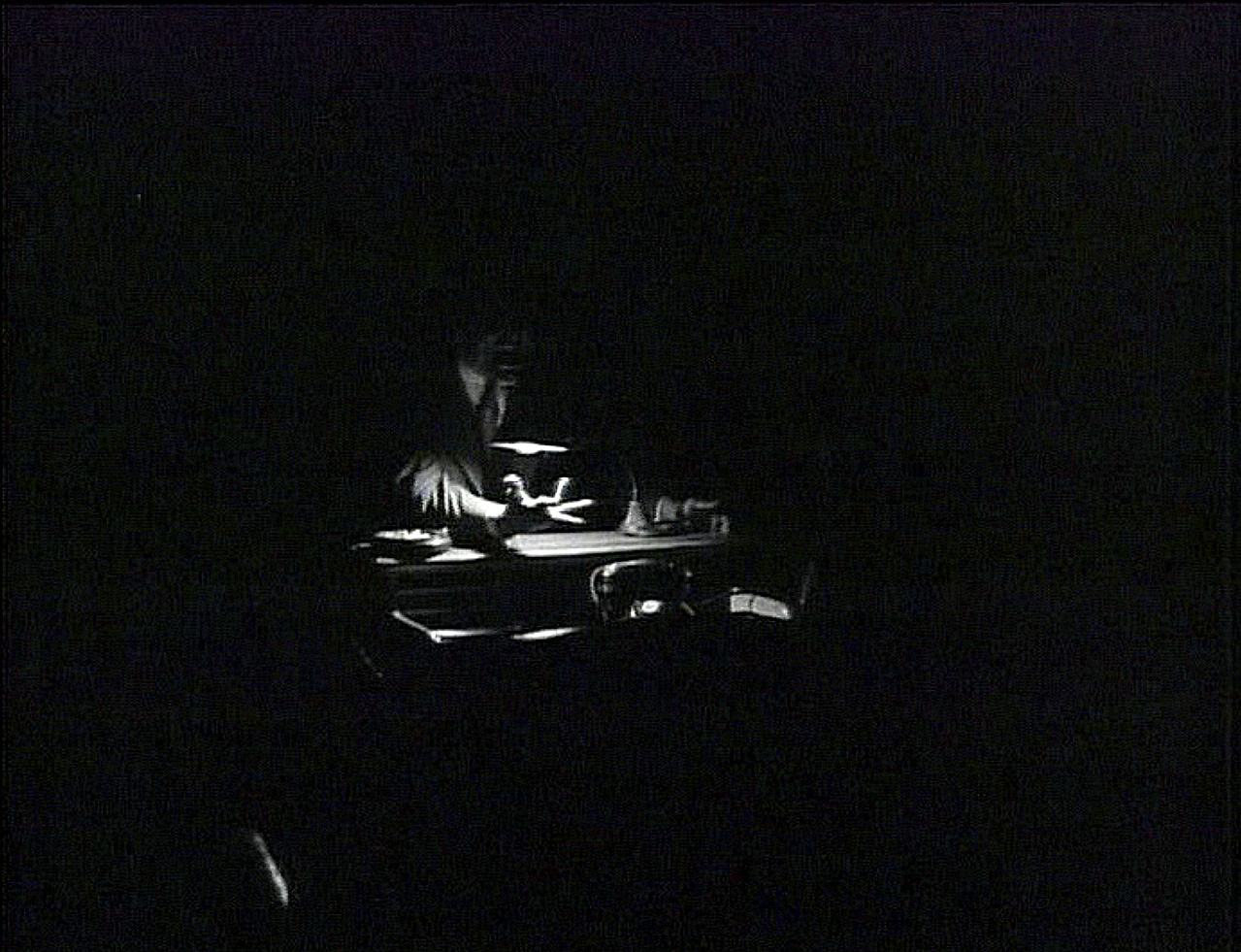
The director now realises the possibilities: What if they didn’t show the cat-people at all? That could be the very solution. The cat-people could remain concealed with only their two eyes visible, glowing in the dark. Add to that a frightened dog, the tattered corpse of a bird, and a young girl with scratches across her face, screaming. The spectators will have to imagine the rest for themselves. “Now, what we put on the screen, it’ll make the backs of their necks crawl,” Shields exclaims with a thrill.
This fascinating scene from Vincente Minnelli’s The Bad and the Beautiful (1952) – an allusion to the director Jacques Tourneur, his producer Val Lewton and their joint film Cat People (1942) – sums up the aesthetic principle that will be central to this article. I call it omission, suggestion, completion. If, in the darkness of the night, only the glowing eyes of the monster and the reactions of his victims are visible, the film subtly encourages the audience to fill in the scary part. Putting things somewhat differently, we could also speak of a triad of elision, evocation and imagination. This triad results from the complex interrelations that occur between the film and its spectators. A conspicuous elision and a filmic evocation simultaneously set in motion the viewer’s sensual imagining of the visual or aural kind. Their imagining fills in and enriches what the film’s visuals or its soundtrack both conceal and allude to at the same time. What is left out is not a mere lack here – it results from the conscious artistic act of leaving things open. At least, that’s what viewers can reasonably assume because the film is structured around what looks like an intentional omission and suggestion. The triad of omission, suggestion, completion thus connects production and reception aesthetics. It combines an assumed intentional omission and suggestion on the part of the filmmaker with an active imaginative completion on the part of the viewer. And it counters the widespread assumption that film is exclusively a medium of showing, presentation, appearing.
Phenomenologically speaking, the spectator’s field of consciousness is temporarily reorganised. The spectator’s film reception, based primarily on the perception of material images and sounds, draws more than usual on his or her immaterial visual or aural imagination. The term ‘imagination’ here refers to the capacity of the spectator to make something absent present. While perception and imagination are always interwoven in the film experience to some degree, in moments of omission, suggestion and completion the viewer’s visual and aural imagining increases. Its conspicuousness is more striking and its significance greater than in scenes that tend toward offering the best possible visibility and audibility (for a discussion and clarification of crucial terms like ‘imagining’ and ‘mental visualisation/auralisation,’ see section III below). [1]
Note, however, that in the phenomenon under discussion the imagining spectators still remain bound to the film. They undertake a directed activity of completion, guided by what the film leaves out and what it suggests. Hence, spectators do not imagine indiscriminately, filling in everything that is absent. This would be a meaningless and endless task running counter to the film’s aesthetic experience. At the same time, the aesthetic principle of omission, suggestion, completion presumes that spectators do not get lost in digressive fantasy and daydreams. In this case they would divorce themselves largely (or even entirely) from the perceived aesthetic object of the film and thus relinquish their aesthetic perception. Instead, the viewer’s act of sensual imagining is intended as an implied part of the film, but it is only made concrete when the spectators, by way of visual and aural suggestions, are brought to fill in the film’s gaps in an individual way. Those viewers who do not feel called to envision the horrific cat-people when they see their glowing eyes in the darkness certainly have an aesthetic experience in their own right, but they undermine what seems to be the film’s implied impact.
Of course, the aesthetic principle that I am concerned with is also familiar from other art forms. It would only betray one’s ignorance not to mention at least a few of its most famous cases. Already more than 2,300 years ago, in the 14th chapter of his Poetics, Aristotle argued for omission and suggestion and against explicit display in tragedy:
The tragic fear and pity may be aroused by the Spectacle; but they may also be aroused by the very structure and incidents of the play – which is the better way and shows the better poet. The Plot in fact should be so framed that, even without seeing the things take place, he who simply hears the account of them shall be filled with horror and pity at the incidents . . . To produce this same effect by means of the Spectacle is less artistic, and requires extraneous aid. Those, however, who make use of the Spectacle to put before us that which is merely monstrous and not productive of fear, are wholly out of touch with Tragedy.
[2] In the eighteenth century, Diderot and Lessing were among the supporters of this aesthetic principle. Diderot wrote pleadingly: “If you paint, must you paint everything? Have pity and leave a gap that my fantasy can fill.” [3] And Lessing formulated his theory of the “pregnant moment” with a kind of aesthetic imperative in mind. For Lessing, the imagination was to be given “free rein”: “The more we see, the more we must be able to imagine. And the more we add in our imagination, the more we must think we see.” [4]
In the twentieth century, we could mention the eminent art historian Ernst H. Gombrich and his discussion of “the beholder’s share” in the context of art reception:
The willing beholder responds to the artist’s suggestion because he enjoys the transformation that occurs in front of his eyes. […] The artist gives the beholder increasingly ‘more to do,’ he draws him into the magic circle of creation and allows him to experience something of the thrill of ‘making’ which had once been the privilege of the artist. [5]
Philosopher Nelson Goodman likewise considers “deletion and supplementation” as one of the crucial processes of world-making in art. [6] As Daniel Yacavone puts it in his summary of Goodman’s position, deletion has:
its origins in all the ways in which the smallest, sketchiest, or most fragmentary cues in a perceptual environment are often sufficient for us to sense, interpret, infer or otherwise construct an entire object or scenario. […] we are also inveterate suppliers of missing information and perpetual cognitive constructors, whether on the most basic level of sense experience or, in the case of our encounters with narrative cinema, our effective comprehension of plots and stories. [7]
In the history of film as well, the complex linkage of aesthetic strategies of omission and suggestion on the side of creation and the sensual completion on the side of reception has a long tradition that leads back far beyond Cat People and The Bad and the Beautiful. Indeed, it could be said that it runs through the entire history of film and is sometimes less, sometimes more apparent. As early as 1916, Hugo Münsterberg pleaded in his classical study The Photoplay for an aesthetic of suggestion:
The photoplay can not only ‘cut back’ in the service of memories, but it can cut off in the service of suggestion. Even if the police did not demand that actual crimes and suicides should never be shown on the screen, for mere artistic reasons it would be wiser to leave the climax to the suggestion to which the whole scene has led. [8]
The three French filmmaker-theorists quoted in my epigraphs and at the very end of this essay – Robert Bresson, Jean-Luc Godard and Jean Epstein – provide further cases in point.
However, this also implies that the aesthetic principle of omission, suggestion and completion clearly runs contrary to what André Bazin famously called the “myth of total cinema.” It does not strive toward a complete representation of reality, a comprehensive illusion of the external world in sound, colour and relief, or a true copy of nature. [9] Paradoxically, this aesthetic principle is given more creative leeway the closer cinema approaches the teleological ideal of ‘total cinema’. The more comprehensive the possibilities of perfect representation become, the more can be intentionally left out. For example, the artistic omission and suggestion of colour by the use of black-and-white film only became possible with the invention of colour film.
Against this backdrop, it seems plausible in the discussion that follows to limit myself to the viewer’s sensual completion of the visual and the aural. In the audiovisual medium of film, the olfactory, gustatory, and tactile cannot consciously be left out since, due to the limitations of the medium, they could never have been presented in the first place. [10] To be sure, some exhibitors and filmmakers have tried to address the senses of smell, touch and proprioception directly. Just think of early cinema’s Hale’s Tours, the Percepto gimmick used for William Castle’s The Tingler (1959), the current D-Box motion system or 4-D cinemas where fog, wind and even rain might fill the theatre. Or consider the recent ‘edible cinema’ trend that gives viewers the chance to accompany their viewing experience with the taste and smell of small canapés and cocktails. These are offered in numbered containers on a tray and opened at matched moments in the film, signalled by a screen-side light box. [11] These cases are, however, the exceptions to the rule. While in prototypical films smell, taste, and touch can certainly be alluded to and evoked (as the important work of film phenomenologists such as Vivian Sobchack, Laura U. Marks and Jennifer Barker has shown), they cannot be omitted. [12]
II. Against the Viewer Passivity Prejudice: Sensual Imagining as Mental Act
Even if, across the history of film theory, there have always been authors who have emphasised the sensual imagining of the absent, a systematic engagement with the aesthetic-sensual complementary activity of the spectator and its phenomenological experiential components has not gone very far in film studies. Not yet, at least, in the English- and German-speaking world. [13] This might well have to do with a widespread prejudice about the film viewer’s alleged passivity of imagining and their total reliance on perceiving. As the late V. F. Perkins has lamented: “The powerful combination of picture and movement tempts us to disregard the involvement of our imaginations in what we see.” [14] Especially when compared with literature the role of the imagination in film is underestimated. As Martin Barker points out:
There is a powerful cultural preference in play which makes it easier to be interested in, and to argue a significant role for imaging in relation to literature than an already-visual medium such as film. […] Isn’t there something otiose about saying that film viewers ‘visualise’? [15]
This prejudice is paradigmatically apparent in the work of otherwise lucid philosophers and media theorists like Theodor W. Adorno, Max Horkheimer, Roland Barthes and Marshall McLuhan, who disregarded the imagining activity of the viewer for aesthetic-normative or media-critical purposes.
Adorno and Horkheimer, for instance, write in the famous ‘culture industry’ chapter of the Dialectic of Enlightenment:
Far more strongly than the theatre of illusion, film denies its audience any dimension in which they might roam freely in imagination – contained by the film’s framework but unsupervised by its precise qualities – without losing the thread; thus it trains those exposed to it to identify film directly with reality. The withering of imagination and spontaneity in the consumer of culture today need not be traced back to psychological mechanisms. The products themselves, especially the most characteristic, the sound film, cripple those faculties through their objective makeup. They are so constructed that their adequate comprehension requires a quick, observant, knowledgeable cast of mind but positively debars the spectator from thinking, if he is not to miss the fleeting facts. This kind of alertness is so ingrained that it does not even need to be activated in particular cases, while still repressing the powers of imagination. [16]
In his study on photography Camera Lucida, Roland Barthes argues similarly. Repeatedly criticising film, Barthes asks, “Do I add to the images of movies? I don’t think so; I don’t have time: in front of the screen, I am not free to shut my eyes; otherwise, opening them again, I would not discover the same image; I am constrained to a continuous voracity.” [17] By not including film among the ‘cool’ but among the ‘hot’ media, Marshall McLuhan likewise denies the activity of complementation on the part of the spectator. [18] Hot media are marked by a high density of information and thus demand less participation or completion from the audience. In addition, there is an enormously one-sided monopolisation of the sense of vision in hot media: a great deal of data runs ‘hot’ to the exclusion and detriment of the other senses. For McLuhan, this purportedly results in a specialisation and fragmentation of the senses. Film viewers thus do not complete the film. They predominantly see but do not imagine it.
These positions are exaggerated. In recent decades, there have been several successful film theoretical attempts to disprove these accusations of mental passivity. Cognitive film theory, for example, emphasises the spectator’s formation of hypotheses, drawing conclusions, and mental model formation. [19] However, cognitivists have not yet dealt with the viewer’s sensual completion, that is acts of visual and aural imagining. Sensual completion has been more recently brought into play by film studies scholars working in the tradition of phenomenology. Using the concept of synaesthesia, such scholars have vehemently insisted on the spectator’s sensual activity of complementation – through a haptic, olfactory, gustatory, and kinaesthetic imagining of the absent. Here, the aforementioned works of Vivian Sobchack, Laura U. Marks and Jennifer Barker are crucial. [20] But these studies, too, do not deal with the fact that spectators often fill in the visually and aurally absent as well. Unwittingly, this trend in research thus follows the common prejudice that places the visual and aural portion of film reception entirely on the part of perception.
As the variety of examples in section IV will show, however, we do not only see and hear what is actually presented on-screen in the act of reception. Often, the complementary act of visual and aural imagining plays an equally decisive role. Indeed, viewers frequently have a conscious albeit hardly ever reflected upon experience of ‘mental superimposition’ or ‘double exposure’ experience. Via omission and suggestion, they are encouraged (sometimes, gently invited) to place their own mental visualisations or auralisations ‘over’ their perception of film images and sounds. In other words, perception and imagination link and complement one another phenomenologically to form a complex aesthetic experience.
Under optimal conditions, mental visualisations and auralisations – despite their relative uncertainty, sketchiness, and lack of detail – can be so striking and effective that they are deposited by the viewer’s memories into their perception box and not in their imagination folder. Director René Clair lends evidence to this striking phenomenon with an anecdote on sound phenomena in which spectators remembered a silent film as a sound film because the aural suggestions of the soundless filmstrip were so striking. [21] In my book Cinematic Emotion in Horror Films and Thrillers: The Aesthetic Paradox of Pleasurable Fear (2010), I mention two other related examples: the torture scene in Quentin Tarantino’s Reservoir Dogs (1992), where a policeman’s ear is cut off; and the final scene in Roman Polanski’s Rosemary’s Baby (1968), where the audience supposedly gets to see Satan’s son face to face.
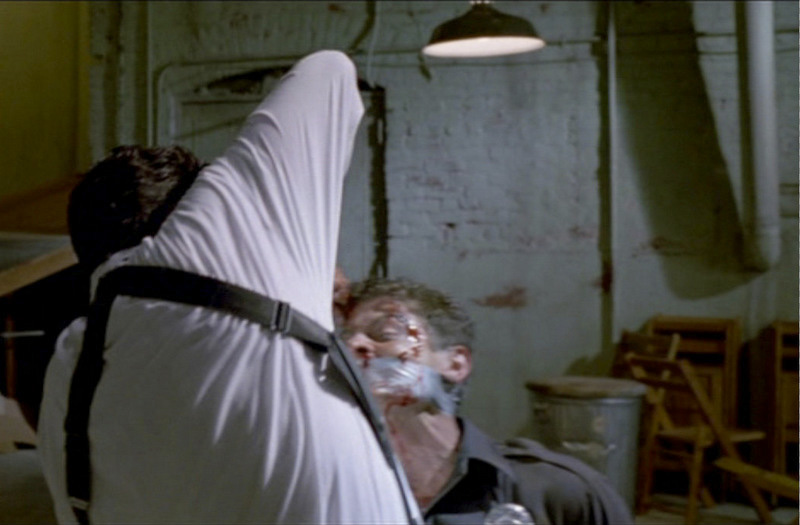
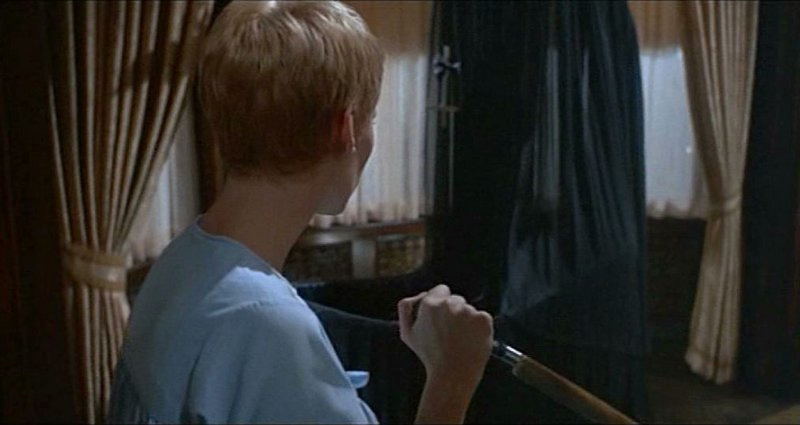
In both cases, some spectators say they saw things they cannot actually have seen because they are not displayed in the film, only alluded to suggestively: the severing of the ear and the face of Satan’s spawn. The philosopher Colin McGinn argues that perception always comes with conviction, while the same is not true of imagination: “Percepts supply (defeasible) reasons to believe; they insist on their own veracity.” The same is not the case for imagination, which does not purport to tell us how the world is. [22] However, during the scenes from Reservoir Dogs and Rosemary’s Baby, the viewers’ imagination must have developed a strong power of conviction and claim for veracity. In this light, two results drawn from empirical cognitive science are revealing in terms of accounting for how we remember mental visualisations. First of all, visualisations that emerge spontaneously and easily are taken for past perceptions without difficulty. Secondly, bizarre visualisations are also confused with perceptions. [23] Apparently, the mental visualisations of some Reservoir Dogs and Rosemary’s Baby viewers were so spontaneously and easily set into motion and at the same time so bizarre that they developed the strong power of conviction which otherwise only applies to perception. These viewers were convinced they saw something they had imagined.
III. Imagination, Imagining, Imaginary: A Brief Clarification of Concepts
In section IV I will give an overview of how varied the aesthetic principle of omission, suggestion and completion actually is. Before doing so, I consider it crucial for future discussions on this topic to briefly explain my choice of central terms – for “terms, as we know, are not just words, but decisions in the matter at hand” (Gottfried Boehm). [24] At first sight, our choice seems not to be so easy. We are confronted with a series of terms that are virtually synonymous: imagination, fantasy, vision, expectation, anticipation, wish, the imaginary, illusion, or the imaginative. [25] For several reasons, I have chosen the noun ‘imagination’ and the verb ‘to imagine’ (including its inflected form ‘imagining’). First of all, these terms are elastic enough at this early point in the discussion so as to not make any final prior decisions. Secondly, they are less loaded than the term ‘imaginary’ which has a long history in Lacanian-inspired psychoanalytic film theory. Thirdly, they are more neutral than the positively connoted noun ‘fantasy,’ which suggests creativity and inspiration. The sometimes negatively, sometimes positively connoted verb ‘to fantasise’ can also sound like digression, daydreaming, and absent-mindedness. [26]
For the cinema spectator’s act of filling in, I propose distinguishing analytically between (a) the capacity, (b) the act, and (c) the product of sensual completion.
Generally, I refer to the capacity of the spectator to conjure something absent in his or her mind with the noun ‘imagination’ (visual and aural). Phenomenologically speaking, imagination should be distinguished from other mental capacities like perception, memory, dream, hallucination, and so on. Even if the word ‘imagination’ might lean towards the visual, it applies to all things sensual: the visible, audible, palpable, touchable, tasteable, smellable, and motoric. However, for reasons given previously, the aesthetic principle of omission, suggestion, completion is restricted to visual and aural imagination.
For the act viewers are involved in when they complete what is omitted and suggested, I use terms like to visually or aurally imagine (as well as to mentally visualise or auralise). In order to emphasise the actual act of visual or aural imagining, I consider these more dynamic sounding verbs preferable to the rather static sounding noun ‘imagination’ as the latter is better restricted to the human capacity on which these acts are based. (For the act of visual and aural imagining, I do not think it necessary to postulate mental organs like an ‘inner eye’ or ‘ear,’ as Colin McGinn does. The use of widespread terms such as the ‘inner eye’ or ‘inner ear’ should therefore only occur in scare quotes.)
Finally, for the objects (or products) of visual and aural imagining, I suggest speaking of mental visualisations as well as mental auralisations. Mental visualisations and auralisations are ‘visual’ and ‘aural’ products that we have introspective access to, can describe via ekphrasis and make intersubjectively accessible through language (even if this is by no means simple).
But why not simply resort to everyday language and speak of a ‘mental image’ or a ‘picture in our mind’? The analogy to an image or picture seems prima facie self-evident, since many objects (or products) of our imagination are undoubtedly visual and thus in a certain sense image- or picture-like. [27]
However, there are several reasons not to use ‘mental image’ or ‘picture in mind’ as these terms presume individual inner-mental objects that represent something in a visual way. [28] Against the backdrop of the viewer’s perception of a flow of moving film images (in the plural), the terms ‘mental image’ or ‘picture’ (usually used in the singular) seem misleading, if only for their static nature: the spectator does not imagine a fixed individual image. In addition, the terms ‘mental image’ or ‘picture in mind’ have the disadvantage of encompassing only the visual objects of imagination. In this way, one is soon caught in the infamous trap of film studies: a focus on the visual over and above the aural. Using an oxymoronic term like ‘sound image’ (W.J.T. Mitchell) doesn’t help the situation either.
But there are good philosophical objections to the concepts of ‘image’ and ‘picture’ as well. McGinn raises first and foremost the media objection. Mental visualisations have no material support: no screen, no photographic paper, no wall, no computer screen. When engaging with images, I can undertake a shift of visual perspective and I can direct my attention at the materiality of the image although I am unable to do this with mental visualisations. McGinn continues:
There is no logical gap for the image between its materials and its intentionality; if the intentionality is subtracted, the image evaporates. But if there are no such intrinsic properties, then I cannot be said to see a picture in a mind’s eye, since it is constitutive of being a picture that there be this partition into intentional and non-intentional properties. [29]
If we take Gottfried Boehm’s famous concept of “iconic difference” as a structural characteristic of all images, this further confirms McGinn’s objection. For Boehm, all pictures work with the mutual interplay of a contrast of continuing moments and discrete elements. Here, the materiality of an image becomes decisive since it constitutes the continuum of the depiction and provides an object for the basic distinction. [30]
Another argument against the term ‘mental image’ is the homunculus objection. If we had mental images or pictures inside us, these images would in turn have to be seen by someone inside of us, too. More still, because images are generally dependent on their use and interpretation, mental images as such would have to be understood and interpreted. “We need a kind of homunculus not just with eyes, but also with a mind and brain. The eyes of the mind would have to not just stare at the pictures, but also be able to approach them in an understanding way,” Oliver Scholz writes. [31] The homunculus dwelling within us would have to be outfitted with another homunculus dwelling within him. And so on and so on. An infinite regress.
McGinn, taking recourse to Ludwig Wittgenstein, assumes that the perception of images always draws on the imagination, a position that phenomenologists in the spirit of Edmund Husserl would term ‘image consciousness.’ With McGinn, we could speak of vision saturated with imagination. If we actually imagined ‘mental images,’ imagining would itself be based on imagining – and thus it would presume what it is supposed to explain. “If we now ask, what this act of imagination involves, the act in which an inner image is seen as an image of X, then the answer cannot be that it is also seeing a mental image, for then we would be clearly surfing back to an infinite regress.” [32]
A fourth point against the everyday phrase ‘image/picture in our mind’ is that a concrete place is suggested: the inner space of the mind in which these images are experienced. [33] Speaking of the space of the mind, however, seems to implicitly postulate a clearly distinguishable interior (‘images in the mind’) that is opposed to the outside of the material images perceived. But that seems to be phenomenologically misleading for mental visualisations are not experienced ‘inside’ us (and certainly not in our head or our brain, even if the latter may be the causal point of origin). Instead, they have a strange intermediate position that Edward Casey tries to capture with the term “limbus.” [34] We experience the object of visual imagination neither ‘outside’ (as in the moment of perception or hallucination) nor ‘here inside’ within me (as is the case with a pain in our belly). Rather, the object of visual imagination is experienced in a non-concrete spatio-temporal in-between space. It is experienced as ‘hovering’ somewhere in front of our ‘inner eye’ but not out there in concrete space.
If not mental images or pictures, what are mental visualisations and auralisations, then? One answer comes from Evan Thompson. Borrowing from the Husserlian distinction between Gegenwärtigung und Vergegenwärtigung, Thompson writes: “In visual imaging or visualizing, we do not inspect a phenomenal mental picture, but instead mentally represent an object by subjectively simulating or emulating a perceptual experience of that object.” [35] (Elsewhere, Thompson speaks of “mentally enacting or entertaining a possible experience of that object.”) [36] Our mental visualisations thus involve the mental conjuring of absent objects: we simulate how it would be if these objects were actually seen or heard. In other words, a visual or aural quasi-perception is directed at an absent object. Oliver Scholz argues along similar lines. Taking recourse to Gilbert Ryle, Scholz speaks of “pretending and make believe”. For Scholz, a person imagining “the face of Jeanne Moreau is understood as meaning that the person acts as if he or she were seeing the face of Jeanne Moreau.” [37] Like Thompson’s simulation, Scholz’s pretending/make-believing has the advantage of being easily transferable to the sensual imagining of sound, taste or smell.
All of the above suggests putting the concept of the ‘mental image’ to rest in this context. The spectator simply does not imagine any images in film reception, unless a painting or photograph is actually described via filmic ekphrasis (as in the examples from An Affair to Remember to The Silence of the Lambs given below). The potential objection that the concept of the ‘mental image’ is just a widespread and descriptive metaphor does not help us for in this case metaphoric language just complicates things. Clarity is of the greatest importance in the debate about omission, suggestion and completion which is – I conjecture – just beginning.
IV. How to Omit and Suggest: Scenes of Visual and Aural Completion
In developing my tentative approach to the aesthetic principle of omission, suggestion and completion in the cinema, I will now discuss a number of strategies as to how spectators are challenged to engage in visual and aural addition. However, it should be clear that I do not intend to make predictions about the concrete responses of each and every viewer. In these specific cases, some spectators might not feel encouraged to vividly imagine what has been omitted and suggested. The examples that I discuss are merely meant to resonate in a general sense so that readers can replace them with cases that they find more personally evocative.
1. Evoking Mental Visualisations
I begin with scenes that focus on visual completion. These scenes ask the viewer to draw on their imagination and to come up with mental visualisations for what has been largely omitted but is at the same time strongly suggested. Later, I will provide examples of aural completion, all the while presuming that these distinctions are heuristic and that in reality visual and aural completion are often strongly intertwined.
1. Rarefied Images. The interplay of omission, suggestion and completion is maybe most conspicuous on the edges of what can still be called film – in ascetic films and scenes of the empty or blank screen. Consider avant-garde or experimental films by Guy Debord (Howlings in favour of Sade/Hurlements en faveur de Sade, 1952), Marguerite Duras (Atlantic Man/L’Homme atlantique, 1981) or Derek Jarman (Blue, 1993). Think of the first minutes of Alejandro González Iñárritu’s contribution to the omnibus film 11’09’’01: September 11 (2002), or scenes from horror movies like The Blair Witch Project (Eduardo Sánchez and Daniel Myrick, 1999) or Haze (Shinya Tsukamoto, 2005). Examples of rarefied images can comprise entire films, individual sequences or brief moments in which the screen is completely monochromatic or even black. [38] For the spectator, there is practically nothing visible at all. And yet, the film plays out before the ‘inner eye’ because there is enough to hear that it suggestively alludes to what could be seen. In the words of Laura Mulvey: “The blank screen, simultaneously something and nothing…”.ill [39] Or, as Richard Misek puts it, “though the viewer may see nothing, there is clearly something there …”. [40]
Here, we can already sense that the strategy works better if perception does not compete with imagination: what is perceptible is not supposed to attract the attention of the spectator in an exaggerated fashion. Rather, perception forms a comparatively neutral background against which the viewer’s act of visual imagining – in the sense of a gestalt-psychological figure-ground constellation – can set itself apart. If we follow Gilles Deleuze’s distinction between a tendency toward saturation and a tendency toward rarefaction in the visual field, empty images (devoid of too many objects, with a limited amount of information) may also be beneficial for visual imagining. [41]
What is crucial here and in many of the strategies discussed below are suggestive sounds. W. J. T. Mitchell, for one, refers to the visual character of what he calls “sound images,” and which may be better called metonymic sounds. [42] Here, typical or conventionalised sounds – as parts that stand in for the whole – trigger mental visualisations. Think of the melody of Big Ben, which may evoke the visual image of the famous London tower or the jet planes that the young Johan (Jörgen Lindström) in Ingmar Bergman’s The Silence (1963) hears flying by his hotel room. Similarly, we can also think of Robert Bresson’s maxims from his Notes on Cinematography: “The eye (in general) superficial, the ear profound and inventive. A locomotive’s whistle imprints on us a whole railroad station.” [43]
2. Pantomimic Actions. In a different but equally effective way, acting on or with something absent can elicit the complicity of the audience. In Dogville (2003), Lars von Trier famously paints a village with chalk on a stage floor. He arranges a few props on it, adds a few suggestive sounds and has the actors act pantomimically – and soon the spectator is only peripherally aware of this massive omission. The German film critic Tobias Kniebe therefore describes von Trier’s coup de cinéma as a “filmic self-chastisement that leaves one astonished for the first thirty minutes, but then [the omission] is completely forgotten.” [44]
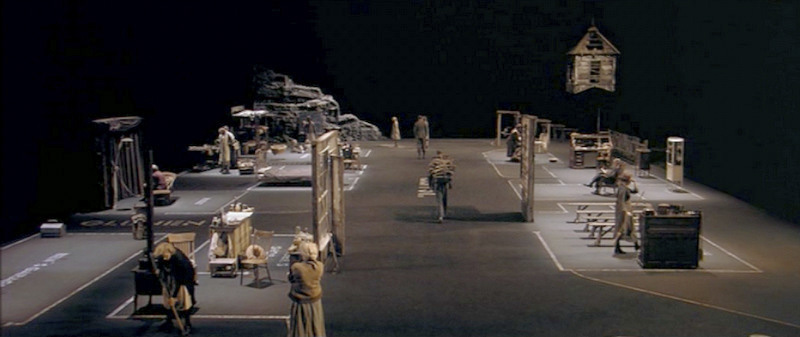
When Lauren Bacall or Nicole Kidman close a make-believe door and creaking noises are audible on the soundtrack, the spectator fills in the gap by visually imagining the door that is merely alluded to. What von Trier’s film seems to say is that the perfectly oiled machinery of mainstream cinema and its illusions is not even necessary. If we evoke things suggestively enough, the audience will imagine the rest and create the illusion, as it were, on its own. Using a term by Daniel Yacavone, we could also speak of a “part-for-whole representational minimalism” to describe these effects. [45]
Likewise, near the end of Werner Herzog’s Heart of Glass/Herz aus Glas (1976) protagonist Hias (Josef Bierbichler) gets involved in a pantomimic fighting scene with an invisible creature that attacks him at the entrance of a forest cave in the mountains. He clenches the creature – it is initially unclear whether it is an animal or a human being – and wrestles with it on the snowy forest ground. Eventually, he manages to stab it. Exhausted and out of breath, he says to himself that he will now roast the “bear.” The protagonist’s verbal hint at the species of the creature turns an initially vague spot of indeterminacy into a more concrete mental visualisation, allowing the viewer to visually imagine a dead bear lying next to Hias. Following Michael Tomasello, we could also use the term ‘iconic gestures’ for pantomimic acts of communication that are aimed at absent entities: “The basic behavior here is to enact an action […] not currently perceptually present, in order to induce the recipient to imagine a corresponding real action.” [46]
3. Blocking and Blurring. In addition, viewers can be encouraged to visually complete what is conspicuously blocked or blurred. Less famous than (but similarly powerful as) the blurred vision of ‘Mother’ behind the shower curtain in Psycho (1960) is the scene in Lindsay Anderson’s If (1968) in which Mick Travis (Malcolm McDowell) and two of his public school friends are brutally caned by the Whips, a group of elder pupils who are eager to punish their anti-authoritarian behaviour. The beating takes place behind a door with translucent glass through which we can only glimpse vague outlines of the action. The suggestive sounds of the whooshing canes, the commands of the Whips and the footsteps of the released boys ask us to visually imagine what we cannot see (clearly).
Following Bernd Hüppauf, we can also distinguish between various degrees of out-of-focus imagery: the obscure, the vague, the complex, and the ambiguous. [47] In addition, a distinction could be made between technically unfocussed images (blurred contours due to the film material; unfocussed camera lens, filters, etc.) and staged concealment within the mise en scène (smoke, fog, rain, clouds, translucent glass panes, etc.). [48] Verbal imperatives directed at characters – and thus implicitly at the spectator as well – are particularly stimulating. In David Fincher’s Seven (1995), for instance, the two investigators Somerset (Morgan Freeman) and Mills (Brad Pitt) are met at the scene of a murder by a policeman with the words: “You better see this!” Following this verbal call to inspect the mutilated corpse of a prostitute, the spectator is denied access to the harmed parts of the body through visual blockades.
4. Off-Screen Evocation. In Shirin (2008), Abbas Kiarostami presents us an impressive audiovisual experiment. For 90 minutes, he shows us the faces of female moviegoers viewing a screen that is located off-screen, behind the camera. By way of the film’s clearly audible soundtrack, we, the film audience, can hear what the fictional audience is watching: the adaptation of an 800-year-old Persian fairy tale. Like an audio-play, the invisible film-in-film sets in motion the viewer’s visual imaginative activity. That activity is also based in emotion, as the women’s faces appear to be deeply moved, with many of them in tears. As simple and bare as Shirin might seem at first, Kiarostami’s melodrama is ultimately very gripping.

An equally effective scene of off-screen evocation can be found in Krzysztof Kieślowski’s Three Colours: Blue/Trois Couleurs: Bleu (1994). Protagonist Julie (Juliette Binoche) wakes up at night because of strange noises outside her apartment. On the cobbled street in front of her apartment building three men beat up a guy who eventually manages to escape. Looking down with Julie from the window of her apartment on the third or fourth floor, viewers can see a man dressed in jeans and a white jacket running towards the house and hear a door slammed shut somewhere downstairs. As we follow the intimidated Julie quickly turning around towards her apartment door, we hear yelling and screaming coming from what must be the hallway of her house. Then, we hear the echoing sounds of a man running upstairs. Stopping on every floor, the man beats frantically against doors and he rings door bells, seeking shelter from his pursuers. When Julie walks toward her door, the noise of the man running upstairs increases, approaching Julie’s apartment. A static close-up of the scared Julie follows with her eyes wide. She is nervously looking off-screen and her face is drowned in blue light. That close-up lasts almost 40 seconds and is accompanied by the sounds of frantic banging against Julie’s door, a man moaning, the sounds of someone being beaten up and – presumably – being dragged away.
Here again, a lot relies on the suggestive power of off-screen sound. But what are viewers invited to imagine? It is likely that they will synthesise in imagination the guys seen outside the apartment building, the hallway encountered earlier in the movie and the acts of running and fighting behind the closed door. It is as if two scenes take place at the same time. On the one hand, there is the mentally visualised scene that confronts viewers via sensual imagination, with a man who tries to escape and find refuge. On the other hand, there is the projected and perceived movie that presents Julie’s responses: fear, her thinking about intervention, terror when she hears the banging against her door and, eventually, her slightly empathic reaction to the man being beaten up outside. This simultaneity is important. Kieślowski could have shown us the scene by either splitting the screen (unusual) or by using cross-cutting (more conventional). Instead, he builds on the viewer’s mental ‘double exposure’ because he is less interested in the action between the fighting men than in his traumatised protagonist and her emotional reactions. The film is all about a woman recovering from trauma and her gradual, painful way back from near-catatonia to lead an empathic, emotional life. Had Kieślowski refrained from showing the beating at the beginning of the scene, the audience’s mental visualisations would have been blurrier, feebler and less vivid. Since viewers have something to feed their imagination with, they can more effortlessly focus on Julie’s reactions, even while visually imagining the beating in a comparatively vivid way.
5. Lateral Ellipsis. A related, but slightly different strategy involves the use of a lateral ellipsis. In a lateral ellipsis (or, as Gérard Genette calls it, a paralipsis) there is a spatial rather than temporal omission in which an important element of the narrative is conspicuously left aside. A lateral ellipsis does not consist of a temporal skipping of events but a spatial circumnavigating of something that occurs simultaneously elsewhere: “The narration avoids an important event by showing another, less important one,” Guido Kirsten notes. [49] Kirsten draws attention to a powerful lateral ellipsis in Cristian Mungiu’s 4 Months, 3 Weeks and 2 Days/4 luni, 3 saptamâni si 2 zile (2007) in which the illegal and dangerous abortion of Gabita (Laura Vasiliu), the friend of protagonist Otilia (Anamaria Marinca), is omitted and the film remains focalized on Otilia throughout. A long take of more than seven minutes shows her dutifully participating in the birthday party of her boyfriend Adi’s mother.
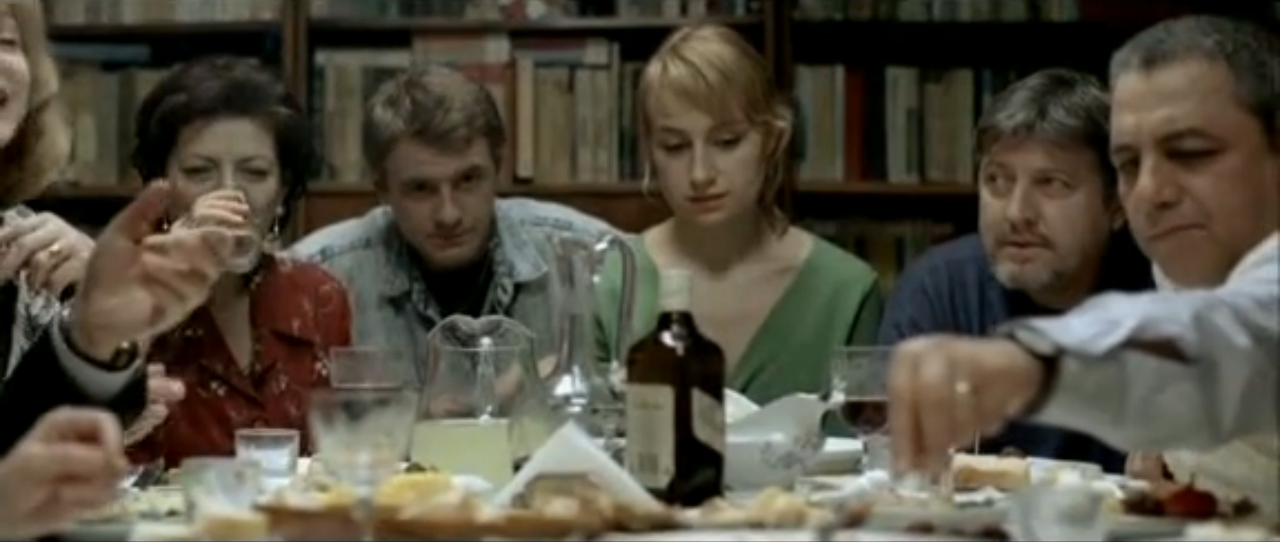
While the guests at the dinner table talk about trivialities, Otilia frequently stares vacantly into nothingness. Her thoughts are quite obviously wandering to her friend Gabita in danger elsewhere. The suggestive power of this scene lies, in part, in its conspicuous omission of the important event. Rather than cross-cutting between the two locations, the film stubbornly remains focused on the ostensibly less important one – and thus asks us to imaginatively fill in what is perceptually left out. Of course, the scene itself also provides cues that invite us to complete the omission (Otilia’s worried and absentminded looks at the centre of the shot). Since viewers will simultaneously want to follow the dialogue at the dinner table, their sensual completion may shift in concreteness and switch between a perceptual focus on the dialogue and an imaginative focus on Gabita’s abortion, depending also on how much Otiliau participates in the conversation via eye contact and verbal contributions.
Friedrich Wilhelm Murnau’s Tartuffe/Herr Tartüff (1925) contains another interesting case of lateral ellipsis, in a scene that involves protagonist Orgon (Werner Krauß) coming home from a long trip. Under the religious spell of his new acquaintance Tartuffe, Orgon refuses to kiss his lustfully longing wife Elmire (Lil Dagover), dismissing kissing as sin. Instead, he disappears in his bedroom upstairs. When the surprised but hopeful Elmire follows him shortly afterwards, the camera remains outside the closed bedroom door in a long static take for about 12 seconds. This take shows us nothing but the Rococo staircase, until Elmire reappears upset and disheartened.
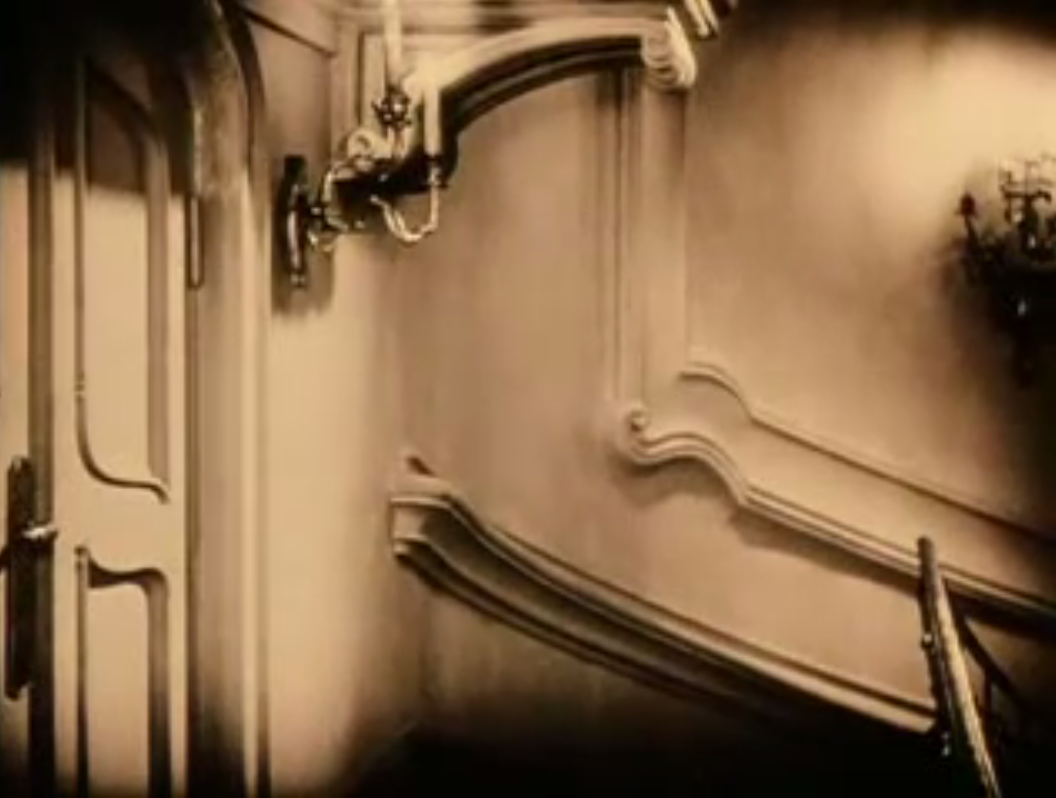
In this seemingly coy lateral ellipsis, viewers are invited to visually imagine a (however erotic) reunion scene of kissing and hugging behind the closed door, until the appearance of the dispirited Elmire crosses out this act of completion. Here, the suggestive potential of the scene derives from an interplay between the piquant omission and a focus on the empty staircase whose perceptual barrenness allows for imaginative activity. What I find particularly noteworthy about the scene is that Elmire’s slow moving reappearance from the bedroom also makes it possible that viewers initiate a retroactive mental visualisation. They might imagine an unpleasant scene of rejection, thus reinterpreting in imagination what has happened between the two partners.
To be sure, it is not easy to decide when exactly we should speak of a lateral ellipsis and when something is simply taking place in off-screen space, as it is in Shirin. A useful distinction might revolve around a direct sensual suggestion of the absent. Can we hear what is happening in off-screen space and are there even visual glimpses of what is being omitted (for instance, via a mirror or a shadow on the wall)? If this is not the case, then we can justifiably speak of a lateral ellipsis. While in Shirin we can clearly hear what goes on beyond the frame, this is not the case in 4 Months, 3 Weeks and 2 Days and Tartuffe.
For the viewer, the lateral ellipsis can become more concrete and suggestive also through the use of what Anton Kaes calls “substitution” (Substituierung). In this case, a symbolic, metonymic or metaphoric shot evocatively replaces what is omitted. A famous example is the murder of little Elsie (Inge Landgut) in Fritz Lang’s M – A City Searches for a Murderer/M – Eine Stadt sucht einen Mörder (1931). [50] While the murder remains conspicuously absent in off-screen space, a series of images – prospectively, simultaneously and retroactively – substitutes both the act and its effect. First, Lang presents us with the emptiness Elsie will leave behind: in the staircase of the apartment building she lives in, at the table in her mother’s apartment where she normally sits for lunch, in the attic where her dress hangs in the background like a little ghost. Then, Lang substitutes the murder itself by showing us Elsie’s ball rolling into the frame and stopping unsteadily, a metonym of her life coming to a halt in the bushes just beyond the edge of the frame. Finally, he alludes to the aftermath of Elsie’s death when the balloon the murderer has bought her becomes entangled in electric wires and then flies into the sky – like Elsie’s soul.
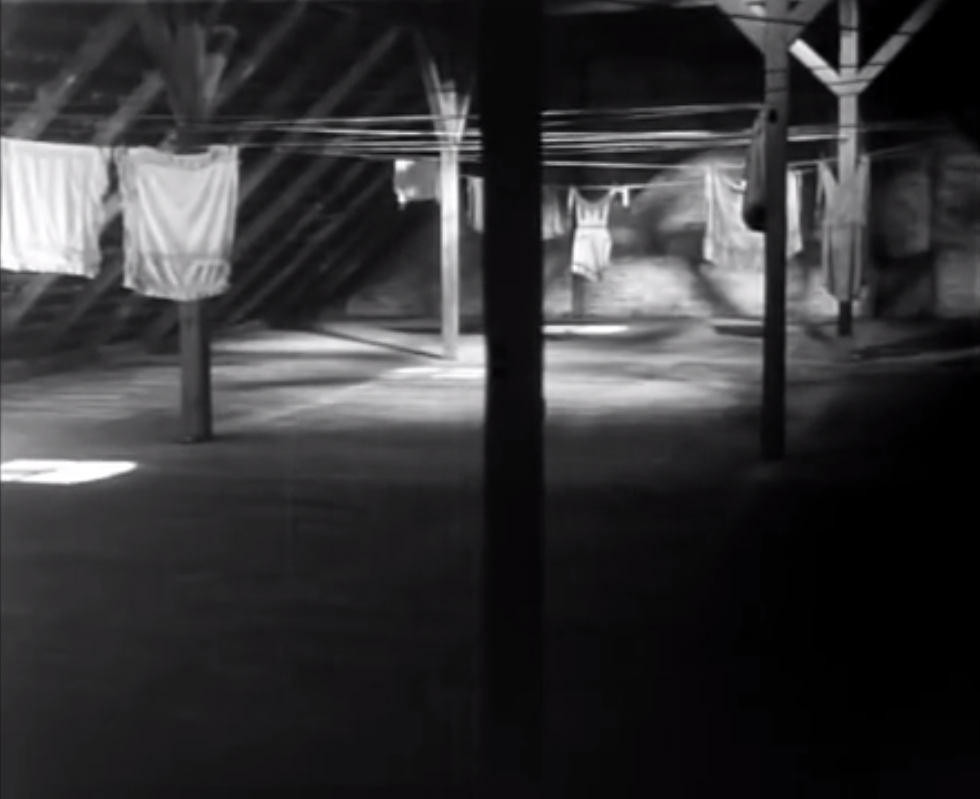
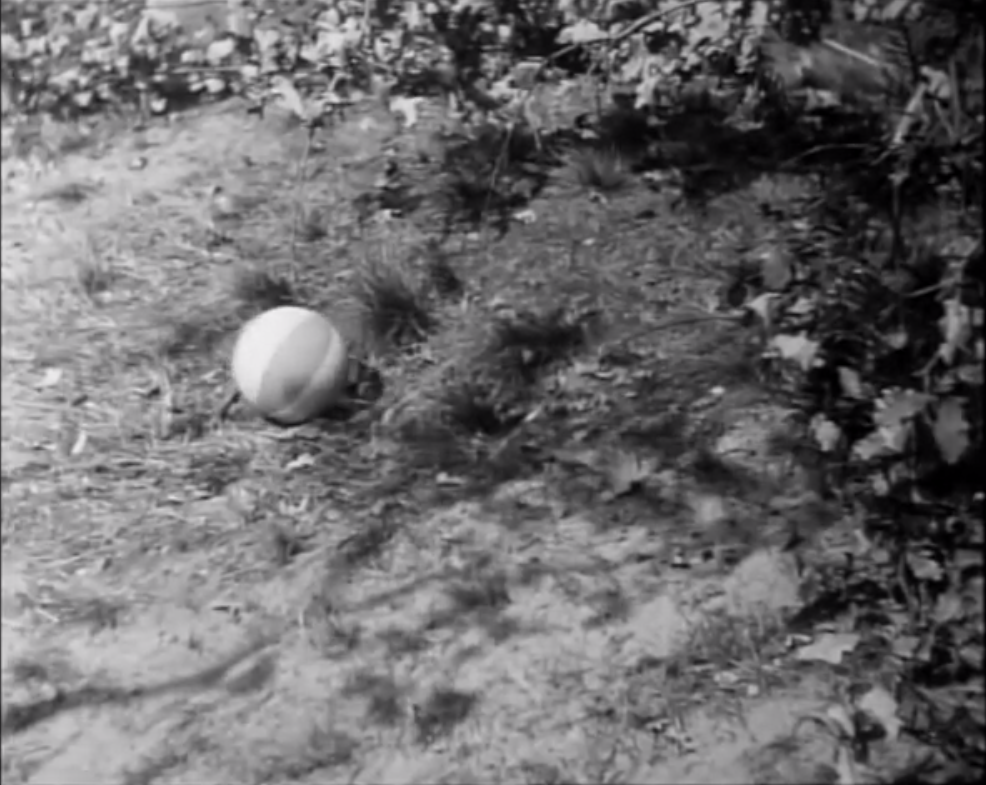
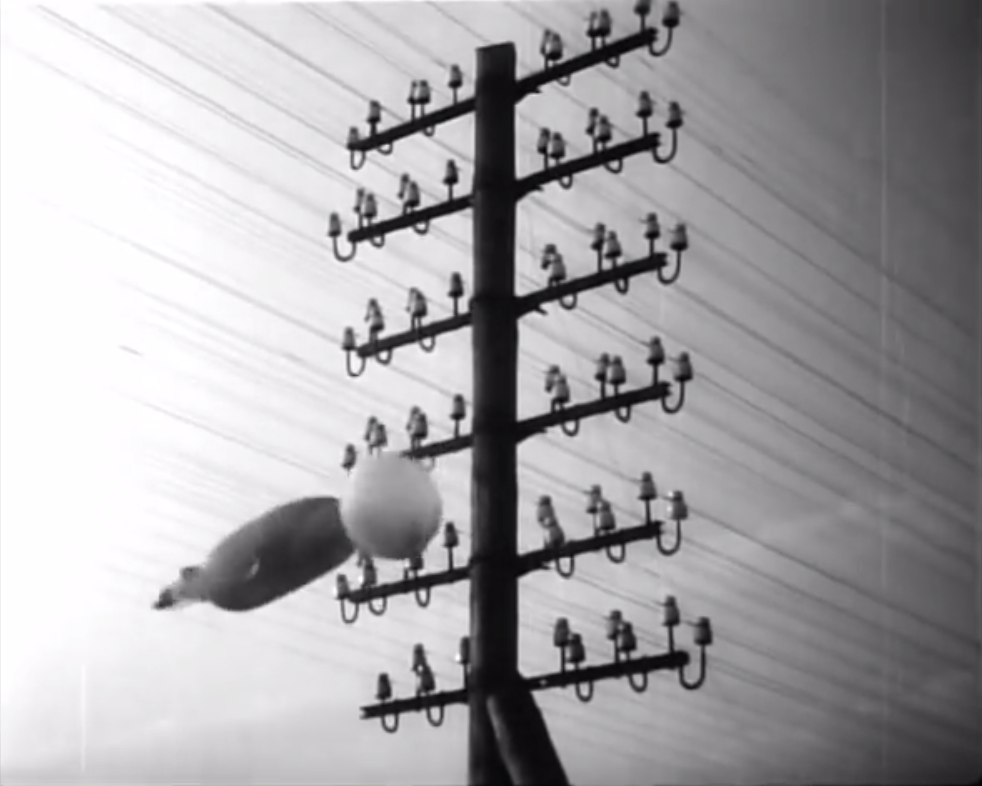
6. Temporal Ellipsis. Stanley Kubrick works in a similar yet slightly different way when in Lolita (1962) he elliptically and highly suggestively withholds from the spectator a sex scene between the underage Lolita (Sue Lyon) and her stepfather Humbert Humbert (James Mason). Certainly, not every temporal ellipsis evokes sensual completion. In fact, most ellipses will not demand any visual or aural imagining on the viewer’s side. In some cases, however, what is temporally cut out is so conspicuous that it may invite viewers to imagine what the film does not present. This is arguably the case in Kubrick’s film when one morning Humbert Humbert is awoken by the mocking and flirting Lolita. Whispering into his ear something inaudible to the spectator, she apparently describes a game that she recently learned at summer camp and played with a boy.
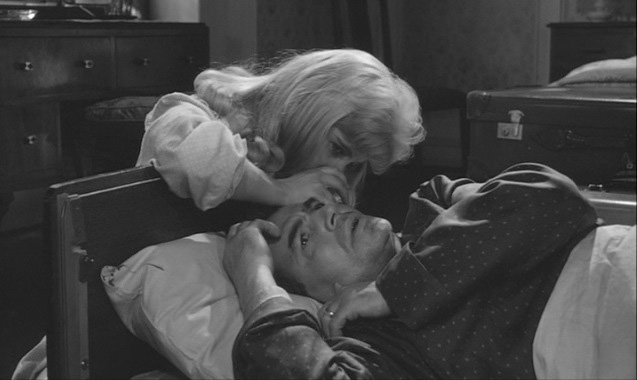
Lolita giggles, while Humbert looks straight at the camera and stutters, “I don’t know what game you’re playing.” She whispers further details in his ear and then asks, “You mean you never played that game when you were a kid?” The flabbergasted Humbert just answers, “I don’t know.” The dialogue cleverly toys with the viewer’s curiosity to know what game they are talking about (is it playing doctor?). When Lolita sits on the bed with an “Alrighty then,” and looks at Humbert Humbert seductively in close-up, the scene’s temporal vector points forward to what immediately follows next, seemingly announcing that the game will soon be played and raising the viewer’s (burning?) desire to find out when. In that moment, however, Kubrick has the screen dissolve to black for several seconds. The black screen becomes a neutral canvas upon which to project one’s audiovisual imagining of what is going on between the two characters. When the picture fades back in, we see Humbert and Lolita driving down a highway.
In The Spirit of Film, Béla Balázs claims, “Montage becomes creative when we learn something that the images in isolation do not show.” [51] He gives the example of a man leaving a room that is subsequently shown to be in a state of disorder, with signs of struggle. Even an arm dripping with blood can be glimpsed. “We have seen neither a struggle nor its victim, but we are in the picture,” Balázs writes, indicating what he also calls the “montage technique of implying hidden connections.” Here, too, it is helpful when the visual or aural curiosity of the spectator is tickled but intentionally left unsatisfied. That curiosity thus has to be compensated through imagining.
7. Suggestive Verbalisation. Similarly baiting are conspicuous omissions like all those paintings, drawings and photographs included in films in which we only get to see their reverse, while characters talk about their content. Think of scenes in An Affair to Remember (Leo McCarey, 1957), The Innocents (Jack Clayton, 1961), Hour of the Wolf/Vargtimmen (Ingmar Bergman, 1968), The Silence of the Lambs (Jonathan Demme, 1991), Fallen Angels (Wong Kar-wai, 1995) or RocknRolla (Guy Ritchie, 2008). [52]
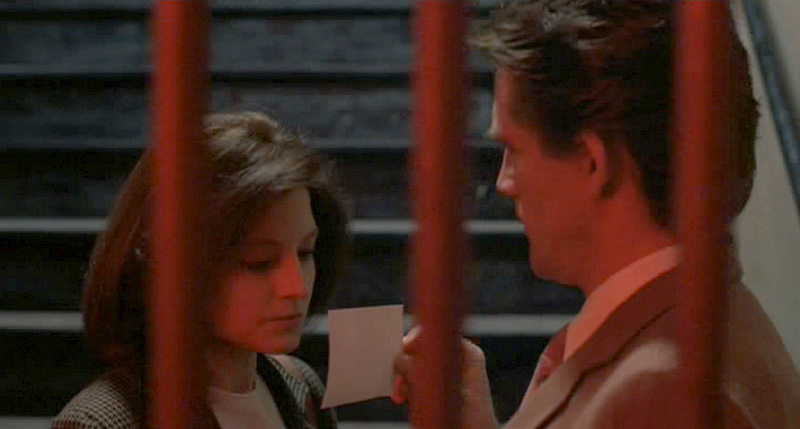
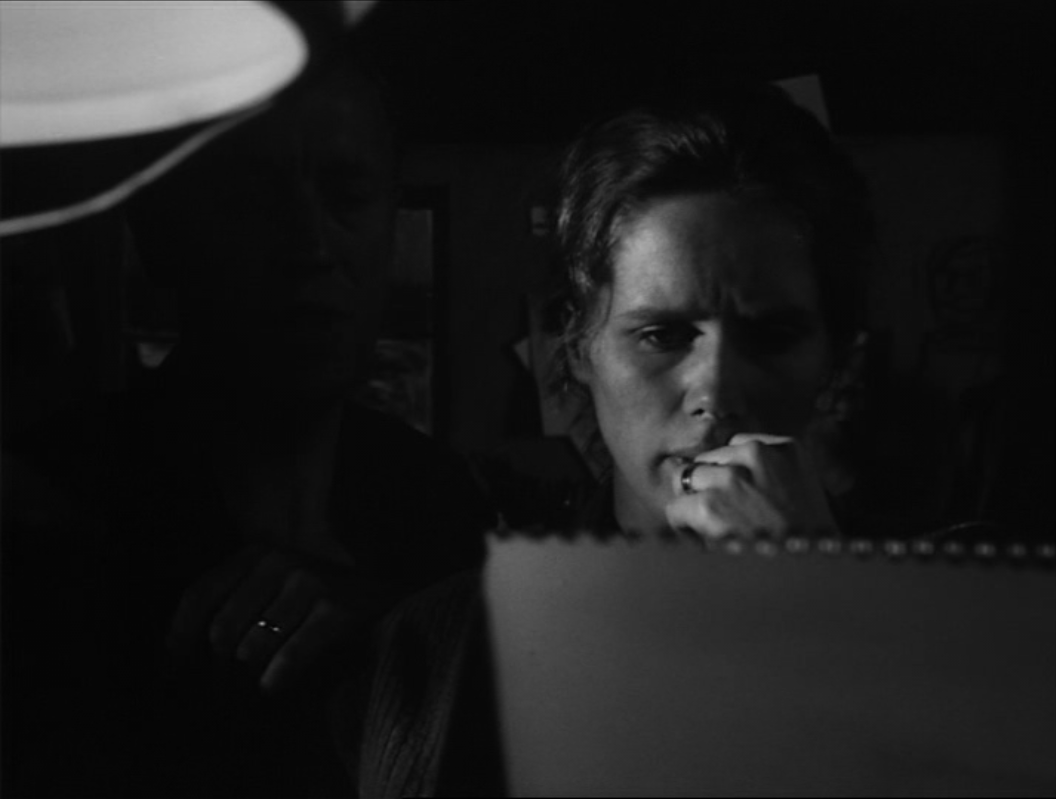
In these instances, we are deep in the realm of what I have elsewhere called ‘suggestive verbalisation.’ [53] Vivid and evocative language animates the viewer to imagine events, states or objects that are neither shown nor heard themselves. In order to linguistically suggest what is omitted and thus remains audiovisually absent, various types of language may be used: monologues, dialogues, voice-over narration, inter-titles, diegetic documents like letters, newspapers or books and so on. Suggestive verbalisations can conveniently be distinguished according to their temporal vectors. Do they suggest something from the past, the present, the future or something that is either always or regularly the case? With reference to drama theory, we might speak of the verbalisation of the past as a messenger’s report – it is the most widespread among the four types of suggestive verbalisation. It comprises, for instance, guilty pleas, witness accounts, confessions, descriptions of dreams or literal messenger’s reports.
For the verbalisation of the present we could synonymously use the drama theoretical term ‘teichoscopy’ as it refers to something that occurs at this very moment in off-screen space (and can therefore be considered a specific form of what we have previously called ‘off-screen evocation’). Think of an early scene in Jim Jarmusch’s Dead Man (1995). William Blake (Johnny Depp) is sitting on a train that takes him deeper and deeper into the wilderness. His compartment is gradually frequented with more and more menacing-looking trappers, pioneers and gold-diggers. At some point, the train fireman (Crispin Glover) takes a seat vis-à-vis Blake, asking him about his background and telling weird stories. All of a sudden, the trappers, pioneers and gold-diggers start firing with their rifles out of the train window. Because the film does not reveal it, viewers might start wondering at this point what they are shooting at. Slightly earlier, Blake had glimpsed a few forsaken and destroyed teepees through the shaded train windows. Thus the film at first leads viewers into imagining that they are shooting Native Americans. These mental visualisations have to be revised and adjusted because the train fireman says with a pointing index finger: “Look. They’re shooting buffalo.”
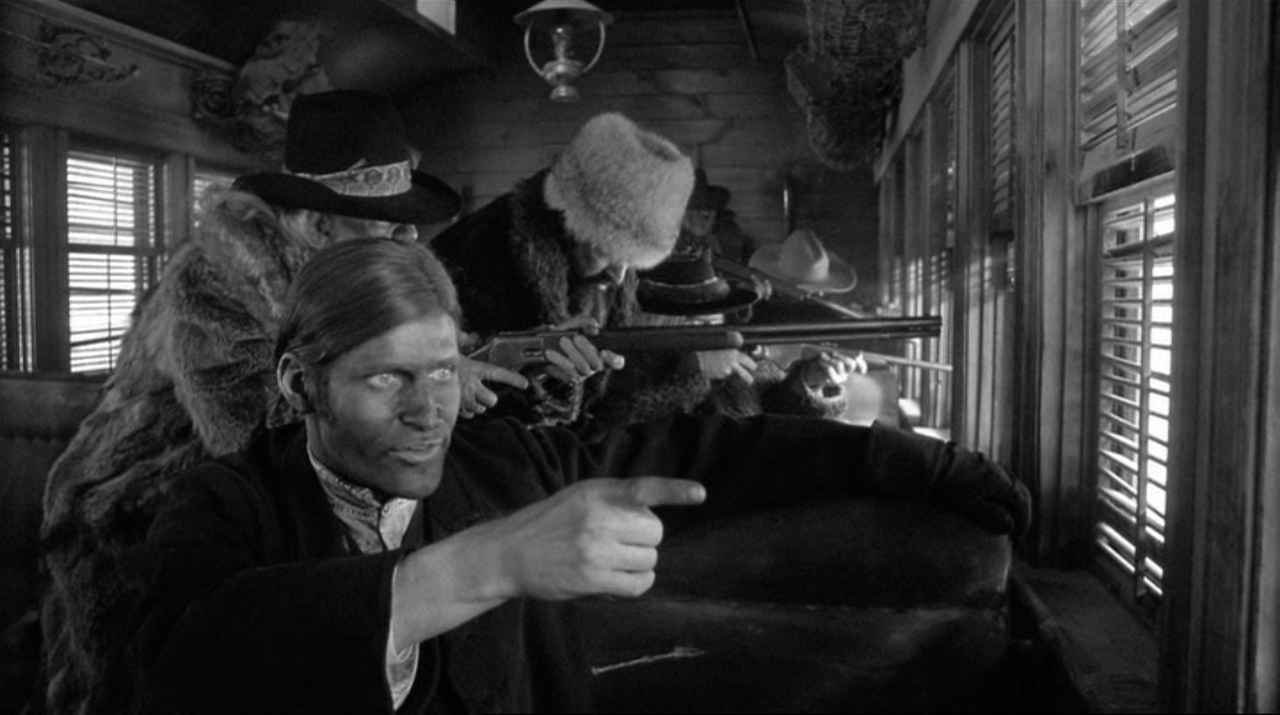
In verbalisations of the future, viewers have to visually imagine plans, prophecies, orders and commands. Think of the various planning scenes in heist films from The Killing (Stanley Kubrick, 1956) to Ocean’s Eleven (Steven Soderbergh, 2001). In verbalisations of the general, the language refers to aspects that are generally or regularly the case. A good example is the populist radio speech given by Long John Willoughby (Gary Cooper) in Frank Capra’s Meet John Doe (1941). In this film, Willoughby describes – with varying degrees of clarity and vividness – the characteristics of the common American John Doe:
He’s simple and he’s wise. He’s inherently honest, but he’s got a streak of larceny in his heart. He seldom walks up to a public telephone without shoving his finger into the slot to see if somebody left a nickel there. He’s the man the ads are written for. He’s the fella everybody sells things to. […] You’ll find us everywhere. We raise the crops; we dig the mines, work the factories, keep the books, fly the planes and drive the buses. And when a cop yells: ‘Stand back there, you!’ He means us, the John Does!
As the last example indicates, not all cases of suggestive verbalisation will involve an intended omission that viewers can reasonably presume on the filmmaker’s part. Sometimes, the context does not suggest something that could be shown in the first place. Sometimes, the suggestive verbalisation is simply too brief to assume any intention of omission. But the longer the verbalisation, the stronger the curiosity to see and the more conspicuous the act of withholding, the likelier it is that one might expect an actual intention to leave out what could have been shown directly.
8. Cut-Aways. The final strategy of visual completion comprises manipulative interruptions of the spectator’s sensorimotor projections. For example, hard cuts (a movement whose continuation is alluded to but not taken up by a match on action) abruptly and unexpectedly cut off a scene change. [54] Here, too, spectators may fill in the gap, this time with a paradoxical ‘afterimage’ of something that they did not get to see. The spectators ‘extend’ the abruptly interrupted act and, in a sense, superimpose their own mental visualisations on top of what follows after the cut. [55] In Cinematic Emotion in Horror Films and Thrillers, I discuss an example from the beginning of Wes Craven’s Scream (1996) in which the masked serial killer stabs a young woman (Drew Barrymore). Instead of showing us the result of the final lethal movement, Craven cuts to the inside of a building. The suggestive sound of a knife penetrating a body overlaps this abrupt scene change, inviting spectators to mentally continue the knife’s movement and thus to imagine the act of killing visually. [56]
Michael Mann uses a slightly more sophisticated (if equally violent) version of the cut-away in Heat (1995). After having had sex with her, serial killer Waingro (Kevin Gage) grabs a prostitute (Kai Soremekun) by the hair and pulls her head brutally to the right, into off-screen space. Following a cut-away, we see the crown cap of a beer bottle being opened in a bar with a loud noise and similar sense of movement, thus implying Waingro has broken the woman’s neck. This second shot comes closer to a parallelised repetition (or substitution in Kaes’ sense) than a match-on-action. But, again, the audience may ‘extend’ the previous scene’s interrupted movement with the mental visualisation of its continuation, ‘layering’ it on top of the second shot.
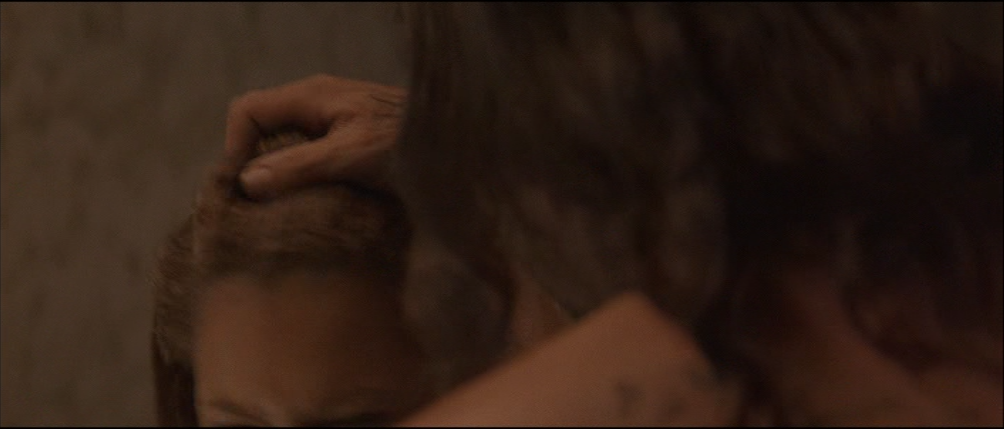
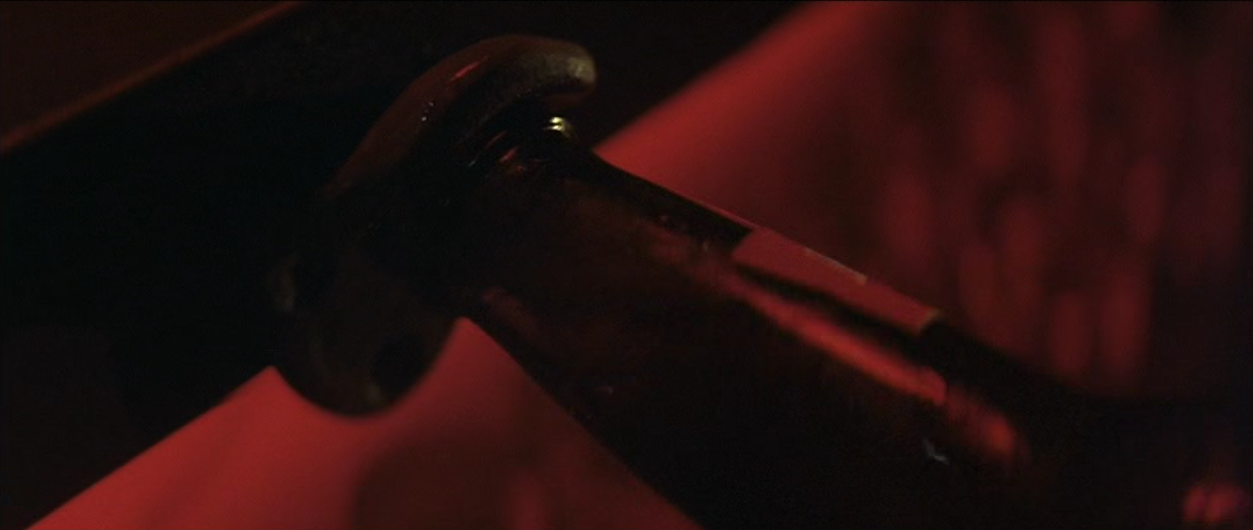
Looking back at these examples, we can broadly distinguish between three different kinds of film images that invite the spectator to locate the invisible (or scarcely visible) by drawing on his or her visual imagination. First of all, what is omitted must sometimes be mentally visualised within the image of which it is a part. Whether in the monochromatic film images of experimental filmmakers, the removal of props by Lars von Trier or Werner Herzog’s creature, the beholder complements what is left out inside the image in all cases. Secondly, the omitted can be found outside the film images in the realm of off-screen space. [57] Take the example of Shirin, where the gaze of diegetic spectators refers actual spectators to the cinema screen that is located ‘behind’ the camera as it were. The “centrifugal” tendency of images leads to a special emphasis on what cannot be seen. That emphasis is also determined by the empathy of spectators with the strong emotional reactions of the women seen in the image. [58] Thirdly, what is left out is hidden between the film images. The temporal ellipsis in Lolita makes it clear how montage can be used to strikingly conceal the decisive moment. While the careful censors of Kubrick’s time may have overlooked it, the decisive moment can be mentally uncovered by willing beholders quite easily.
2. Evoking Mental Auralisations
As I have variously indicated, the aesthetic principle of omission, suggestion and completion is by no means limited to the visual. Film history knows many examples where spectators have to activate their ‘mind’s ear’. “Hearing the sound that one wishes to hear, or that the image suggests, is not that rare,” as Michel Chion observes. [59]
1. Lip-Reading. An aural completion equivalent to the visual completion of pantomimic actions can be found in what Chion calls the “game of lip-reading.” [60] An illustrative example comes from Paul Thomas Anderson’s Boogie Nights (1997), wherein the spectator is quite blatantly forced to complete an alluded to yet inaudible part of a conversation. Pornography director Jack Horner (Burt Reynolds) sits in the visiting room of a prison vis-à-vis his imprisoned friend Colonel James (Robert Ridgely). The two are separated from one another by a pane of glass and are communicating by telephone. We see the colonel in a close-up speaking to Jack Horner. In the middle of a sentence, the communication device stops working. He had previously asked Jack, “Am I your friend?” And after a renewed “Am I…” nothing more can be heard. Those spectators who can read the character’s lips most likely fill the aural gap without difficulty with the words …“your friend? Jack, am I your friend?”
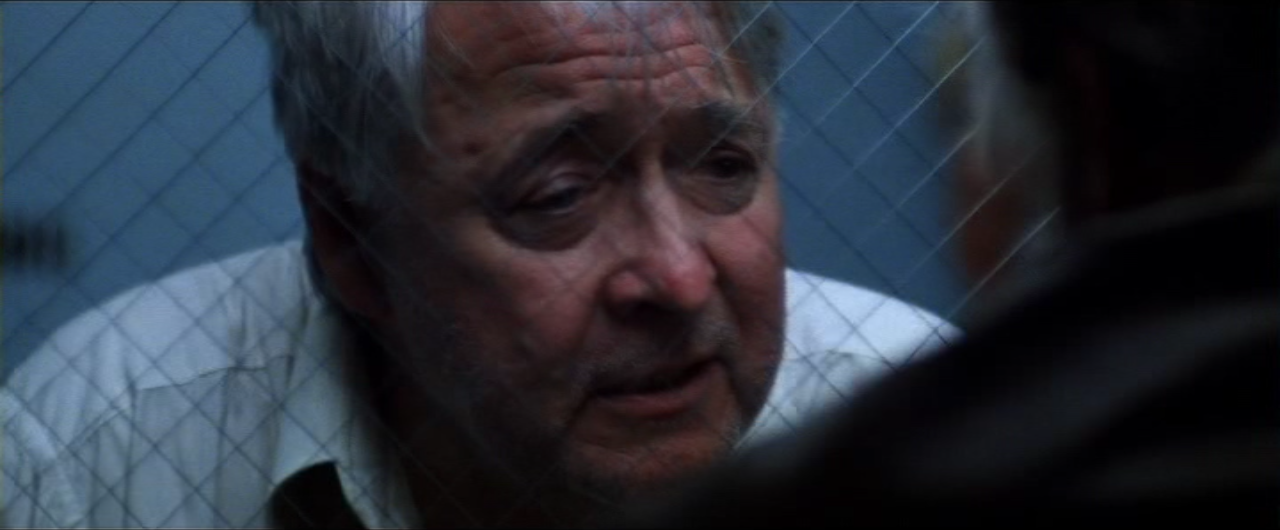
Another, if not quite as striking example of lip-reading can be found in Alfred Hitchcock’s North by Northwest (1959). As in other Hitchcock films, there is a moment when a diegetic sound source swells to dominate the soundtrack. The spectator can no longer follow dialogue that contains important information for the continuation of the plot, thus delaying narrative resolution. Roger Thornhill (Cary Grant) and the mysterious “professor” (Leo G. Carroll) walk across an airport at night and discuss the strange events that have taken place over the course of the film. They are now just about to reveal their plans when the professor says, “Come on, we’ll discuss it on the plane.” While they continue forward, the noise of a starting plane keeps spectators from adequately following their conversation. One can only hear fragments of sentences. These fragments may lead the spectator to an act of aural imagining via lip-reading.
2. Aural Ellipsis. A second strategy implies the conspicuous omission of sounds located in off-screen space and beyond. Here, we can find an aural equivalent to what I have previously called ‘off-screen evocation’ and ‘lateral ellipsis.’ Take the absurd telephone scene in Kubrick’s Dr. Strangelove (1964) between the American president Merkin Muffley (Peter Sellers) and the Soviet premier Dmitiri Kissoff in the War Room of the Pentagon. In this scene, the comic effect results largely from the fact that the spectator is forced to visually imagine the unseen reactions of the Russian, Kissoff, who is apparently listening to music and totally drunk. The trigger for these mental visualisations are the dialogue passages of Muffley and the facial expressions of the other individuals present in the War Room. Kissoff seems offended, then short-tempered, then surprised and usually slow on the uptake. But, importantly, the audience is also forced to reconstruct Kissoff’s inaudible part of the conversation using passages like the following:
I’m sorry, too, Dmitri. [Pause] I’m very sorry. [Pause] Alright, you’re sorrier than I am. But I’m sorry as well. [Pause] I’m as sorry as you are, Dmitri. Don’t say that you’re more sorry than I am, because I am capable of being sorry just as you are. So we’re both sorry, alright? [Pause] Alright.
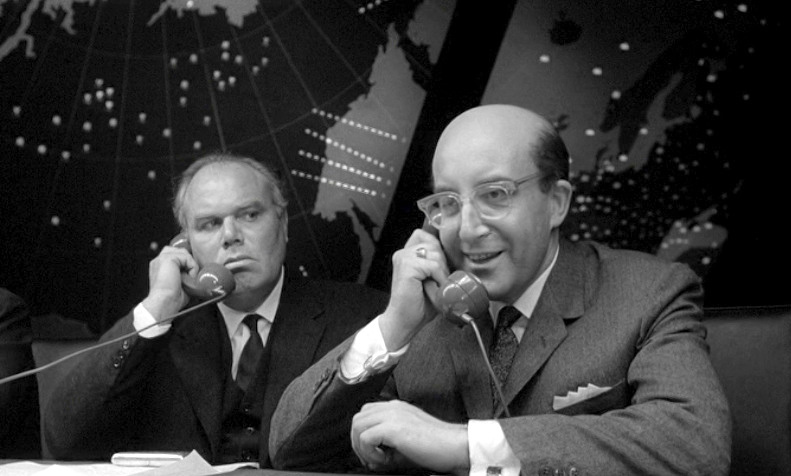
In a certain sense, the filmic images here emit an inaudible sound. Chion regards this technique particularly highly: “the sound film is all the more eloquent when it expresses this implied sound.” [61] Again, this aesthetic maxim could not exist in film for the senses of smell, taste, and touch. It is for this reason that I have limited myself to the omission, suggestion, and completion of the visual and the acoustic.
No doubt, my list of strategies does not even come close to a comprehensive poetics of omission, suggestion and completion. In future research, it would be useful to discuss what other possibilities exist and which of these strategies will trigger mental visualisations and auralisations especially effectively. We should also ask what explicit or implicit knowledge filmmakers use when they allow the spectators to assume the activity of sensually completing the film. Moreover, the question could be raised of how certain groups of films approach this aesthetic principle. Due to their specific intentions or their aesthetic limitations, are there genres (like the thriller), filmic modes (like the documentary) and historical periods (like the silent era) that bring their own tactics into play? [62] Take, for instance, Edward Branigan’s astute remark on silent cinema:
A silent film is not truly silent because it is obliged to provide a rationale justifying how sounds can be heard. A spectator does not presume characters to be deaf or the world mute. For example, a silent image of someone playing a piano, or perhaps merely the image of a piano by itself, may bring about an appropriate mental sounding. Furthermore, when reading a dialogue intertitle in a silent film, a spectator may hear his or her own inner voice or else the ‘imagined voice’ of a character … [63]
Furthermore, the question could be raised as to why certain directors use the technique of omission in such an extensive way, refusing explicit depiction. Here, for instance, is how critic Jonathan Rosenbaum characterises the cinema of Abbas Kiarostami: “[His films] keep altering the balance between what’s actually seen in a story and what’s implied or imagined, and this is part of what continues to make Kiarostami such a contested and fascinating figure.” [64] In this context, we may also think of the extensive use of suggestive verbalisation in the work of Bergman or Kubrick. In addition, are there certain national cinemas that place a special value on elision and evocation? If so, at what points in time did they do so? And for what reasons? Were there moral, juridical, economic or aesthetic reasons behind it? [65]
It was in 1921 when director and film theorist Jean Epstein first laid down the principle of what he defined as his “Aesthetic of Suggestion”: “One no longer tells; one suggests. This allows the pleasure of discovery and creation. More personally and without restrictions, the image comes together.” [66] Almost 100 years later, this aesthetic of suggestion – or omission, suggestion, completion, as I have called it – is as fascinating as ever. It evidently leaves many questions still to be answered.
This essay is a thoroughly revised and extended version of a text first published in German as “Auslassen, Andeuten, Auffüllen. Der Film und die Imagination des Zuschauers – eine Annäherung” in Julian Hanich and Hans Jürgen Wulff (eds), Auslassen, Andeuten, Auffüllen: Der Film und die Imagination des Zuschauers (Munich: Fink, 2012). I thank Brian Currid for his translation of the original German.
NOTES:
[1] On the phenomenology of imagining and in particular mental visualising, see Edward S. Casey, Imagining: A Phenomenological Study (Bloomington: Indiana University Press, 1976); Jean-Paul Sartre, The Imaginary: A Phenomenological Psychology of the Imagination (London: Routledge, 2004); and Evan Thompson, “Look Again: Phenomenology and Mental Imagery,” Phenomenology and Cognitive Science, Vol. 6, No. 1-2, 2007.
[2] Aristotle, Poetics, retrieved from http://www.authorama.com/the-poetics-15.html (last accessed: 15 June 2017; emphasis added).
[3] Denis Diderot, “Salon of 1763”, quoted in Peter Wagner, “Minding the Gaps: Ellipses in William Hogarth’s Narrative Art”, The Ruin and the Sketch in the Eighteenth Century (Trier: Wissenschaftlicher Verlag Trier, 2008), p. 121.
[4] Gotthold Ephraim Lessing (trans. Edward Allen McCormick), Laocoön: An Essay on the Limits of Painting and Poetry (Indianapolis: The Bobbs Merrill Company, Inc., 1962), p. 19.
[5] Ernst H. Gombrich, Art and Illusion: A Study in the Psychology of Pictorial Representation (Princeton: Princeton University Press, 2000), p. 202. On the influential reception aesthetic approach see Wolfgang Kemp, “Verständlichkeit und Spannung. Über Leerstellen in der Malerei des 19. Jh.,” in Wolfgang Kemp (ed.), Der Betrachter ist im Bild. Kunstwissenschaft und Rezeptionsästhetik (Köln: DuMont, 1991).
[6] Nelson Goodman, Ways of Worldmaking (Indiana: Hackett Publishing, 1978), pp. 14-16.
[7] Daniel Yacavone, Film Worlds: A Philosophical Aesthetics of Cinema (New York: Columbia University Press, 2015), p. 102.
[8] Hugo Münsterberg, The Photoplay (New York: D. Appleton and Co., 1916), p. 110.
[9] André Bazin (trans. Hugh Gray), “The Myth of Total Cinema”, What Is Cinema?, Vol.1 (Berkeley: University of California Press, 1967).
[10] For an overview of how filmmakers have tried to introduce smell in the cinema see Vivian Sobchack, “The Dream Olfactory: Making Scents of Cinema” in Marta Zarzycka and Bettina Papenburg (eds), Carnal Aesthetics: Transgressive Imagery and Feminist Politics (London: I.B. Tauris, 2013).
[11] See the official website at http://ediblecinema.co.uk/ and Kathryn Bromwich, “Spotlight on… Edible Cinema”, The Guardian (17 April 2016). https://www.theguardian.com/film/2016/apr/17/spotlight-on-edible-cinema-guide-film-food (last accessed: 9 September 2017).
[12] See Vivian Sobchack, Carnal Thoughts: Embodiment and Moving Image Culture (Berkeley: University of California Press, 2004); Laura U. Marks, The Skin of the Film: Intercultural Cinema, Embodiment, and the Senses (Durham: Duke University Press, 2000); Laura U. Marks, Touch: Sensuous Theory and Multisensory Media (Minneapolis: University of Minnesota Press, 2002); and Jennifer M. Barker, The Tactile Eye: Touch and the Cinematic Experience (Berkeley: University of California Press, 2009).
[13] The following studies touch upon this question in different ways: Henry Bacon, “The Extent of Mental Completion of Films”, Projections: The Journal for Movies and Mind, Vol. 5, No. 1 (2011), pp. 31-50; Nadine Dablé, Leerstellen transmedial. Auslassungsphänomene als narrative Strategie in Film und Fernsehen (Bielefeld: Transcript, 2012); Georgina Evans, “Imagination and the Senses: Krzysztof Kieślowski’s Trois Couleurs: Blanc”, Paragraph, Vol. 31, No. 2 (2008), pp. 223-235; Julian Hanich, Cinematic Emotion in Horror Films and Thrillers: The Aesthetic Paradox of Pleasurable Fear (New York: Routledge, 2010; chapter 4); Julian Hanich and Hans Jürgen Wulff (eds), Auslassen, Andeuten, Auffüllen. Der Film und die Imagination des Zuschauers (Munich: Fink, 2012); Dorothee Kimmich, “Die Bildlichkeit der Leerstelle: Bemerkungen zur Leerstellenkonzeption in der frühen Filmtheorie” in Wolfgang Adam, Holger Dainat, and Gunter Schandera (eds), Wissenschaft und Systemveränderung: Rezeptionsforschung in Ost und West (Heidelberg: Winter, 2003); Patrick Kruse, Über das Filmbild hinaus: Die Präsenz des Absenten in der Filmrezeption (Stuttgart: Ibidem, 2010); Fabienne Liptay, “Leerstellen im Film. Zum Wechselspiel von Bild und Einbildung” in Thomas Koebner, Thomas Meder and Fabienne Liptay (eds), Bildtheorie und Film (Munich: Edition Text und Kritik, 2006); Dominic McIver Lopes, “Imagination, Illusion and Experience in Film,” Philosophical Studies, Vol. 89, No. 2–3 (1998), pp. 343-353; Gregory Minissale, “Beyond Internalism and Externalism: Husserl and Sartre’s Image Consciousness in Hitchcock and Buñuel,” Film-Philosophy, Vol. 14, No. 1 (2010); Heinz-Peter Preußer (ed.), Anschauen und Vorstellen: Gelenkte Imagination im Kino (Marburg: Schüren, 2013); Johanna Schwenk, Leerstellen – Resonanzräume: Zur Ästhetik der Auslassung im Werk des Filmregisseurs Christian Petzold (Baden-Baden: Nomos, 2012); Vivian Sobchack, “When the Ear Dreams: Dolby Digital and the Imagination of Sound,” in: Film Quarterly, Vol. 58, No. 4 (2005), pp. 2-15; Jane Stadler, Pulling Focus: Intersubjective Experience, Narrative Film, and Ethics (London: Bloomsbury, 2008; chapter 6); Kathleen Stock, “Fantasy, Imagination, and Film”, British Journal of Aesthetics, Vol. 49, No. 4 (2009), pp. 357-369; Petr Szczepanik, “Sonic Imagination; or, Film Sound as a Discursive Construct in Czech Culture of the Transitional Period”, in Jay Beck and Tony Grajeda (eds), Lowering the Boom: Critical Studies in Film Sound (Urbana, Illinois: University of Illinois Press 2008); Christiane Voss, “Film Experience and the Formation of Illusion: The Spectator as ‘Surrogate Body’ for the Cinema”, Cinema Journal, Vol. 50, No. 4 (2011), pp.136-150; and Hans J. Wulff, “Bilder und imaginative Akte. Ein Beitrag zur Theorie ikonischer Zeichen,” in: Zeitschrift für Ästhetik und Allgemeine Kunstwissenschaft, Vol. 38, No. 2 (1993), pp. 185-205.
[14] V.F. Perkins, Film as Film: Understanding and Judging Movies (New York: Da Capo, 1993 [1972]), p. 63.
[15] Martin Barker, “Envisaging ‘Visualisation’: Some Challenges from the International Lord of the Rings Project”, Film-Philosophy, Vol. 10, No. 3 (2006), p. 12. http://www.film-philosophy.com/2006v10n3/barker.pdf (last accessed: 9 September 2017).
[16] Max Horkheimer and Theodor W. Adorno (trans. Edmund Jephcott), Dialectic of Enlightenment (Stanford: Stanford University Press, 2002), pp. 99–100 (emphasis added).
[17] Roland Barthes (trans. Richard Howard), Camera Lucida: Reflections on Photography (New York: Farrar, Straus and Giroux, Inc., 1981), p. 55.
[18] Marshall McLuhan, Understanding Media: The Extensions of Man (London: Routledge, 2001 [1964]).
[19] See, for instance, David Bordwell, Narration in the Fiction Film (Madison: University of Wisconsin Press, 1985) and “The Viewer’s Share: Models of Mind in Explaining Film” in Arthur P. Shimamura (ed.), Psychocinematics (Oxford: Oxford University Press, 2013).
[20] On this issue see also Tarja Laine and Wanda Strauven, “The Synaesthetic Turn”, New Review of Film and Television Studies, Vol. 7, No. 3 (2009), pp. 249-255 and Robin Curtis, Marc Glöde, and Gertrud Koch (eds), Synästhesie-Effekte: Zur Intermodalität der ästhetischen Wahrnehmung (Paderborn: Fink, 2011).
[21] As Edgar Morin reports: “René Clair, rereading thirty years later one of his articles written in 1923, noted that ‘sound and dialogue could be suggested by silent images … and the spectator’s imagination did the rest.’ He added: ‘This power of suggestion was so effective that more than once I have heard people … insist that a particular old film was a talkie when in fact it was silent. … These people … were convinced they heard the dialogue.’” Edgar Morin (trans. Lorraine Mortimer), The Cinema, or the Imaginary Man (Minneapolis: University of Minnesota Press, 2005), p. 136.
[22] Colin McGinn, Mindsight: Image, Dream, Meaning (Cambridge: Harvard University Press, 2004), p. 21.
[23] For helpful overviews of mental-imagery research see: Elaine Scarry, Dreaming by the Book (New York: Farrar, Straus, Giroux, 1999); McGinn, Mindsight; and Nigel J. T. Thomas, “Mental Imagery” in Edward N. Zalta (ed.), The Stanford Encyclopedia of Philosophy (Stanford: Stanford University Press, 2008).
[24] Gottfried Boehm, “Ikonische Differenz”, Rheinsprung 11. Zeitschrift für Bildkritik, Vol. 1 (2011), p. 173.
[25] For more on this, see Benjamin Wihstutz, Theater der Einbildung: Zur Wahrnehmung und Imagination des Zuschauers (Berlin: Theater der Zeit, 2007), pp. 50ff.
[26] Since there are often such moments of fantasy or daydreaming in the cinema, let me briefly explore them to avoid possible misunderstandings. Unlike directed imagination, where the spectator remains bound to the film, in fantasising, the spectator divorces himself or herself from aesthetic perception. Benjamin Wihstutz has formulated this fittingly for the comparable constellation of the theatre: “The fantasy of the spectator longs to travel. It has no interest in the linear course of the performance. It always seeks to gain the upper hand, has to be kept under control if the events on stage are to be followed … While fantasy leads away from sensual impressions, imagination binds attention to perception”. Wihstutz, p. 62. There are many different causes for such fantasising and daydreaming. A trigger can be boredom which can overcome me while watching a film such that I seek to escape by losing myself in my own thoughts. Perhaps it will bring me the memory of something experienced or the fear of something yet to come. Fantasising can thus refer to the past, the future or to hypothetical things. It can also refer to the here and now of the cinema—for example, when the erotic atmosphere of the cinema inspires us to fantasise or daydream. On the erotics of the cinema, see Roland Barthes (trans. Richard Howard), “Leaving the Movie Theatre” in The Rustle of Language (New York: Hill and Wang, 1986).
[27] Colin McGinn sees a decisive reason for this in the so-called “problem of absence”. Imaginations, like images, have absent objects as their subject. “The picture is perhaps our most palpable and intelligible form of representation, so we are prone to try to find picturing everywhere […].” McGinn, Mindsight, p. 176.
[28] See Oliver R. Scholz, “Bilder im Geiste? Das Standardmodell, sein Scheitern und ein Gegenvorschlag” in Klaus Sachs-Hombach (ed.), Bilder im Geiste. Zur kognitiven und erkenntnistheoretischen Funktion piktorialer Repräsentationen (Amsterdam: Rodopi, 1995).
[29] McGinn, Mindsight, p. 63 (emphasis in the original).
[30] Boehm writes: “It is only when opacity comes into play that the meaning of the image can emerge, that the spark of difference can glow. We understand the iconic difference as event in the sense of an oscillation or logic of contrast. Visual works open their space of significance, by allowing the eye a complex back and forth, allowing it to oscillate between simultaneous prospecting and successive movement”. See Boehm, “Ikonische Differenz”, pp. 170–176.
[31] Scholz, “Bilder im Geiste”, p. 53. Scholz introduces positions that seek to weaken the homunculus objection but immediately shows their flaws, pp. 54–56.
[32] McGinn, Mindsight, pp. 84–85.
[33] Scholz, “Bilder im Geiste”, p. 46.
[34] Edward S. Casey, “Comparative Phenomenology of Mental Activity: Memory, Hallucination, and Fantasy Contrasted with Imagination”, in: Research in Phenomenology, Vol. 6, No. 1 (1976), p. 14.
[35] Thompson, “Look Again”, p. 156.
[36] Ibid., Thompson,“Look Again”, p. 138.
[37] Scholz, “Bilder im Geiste”, p. 58.
[38] Christian Ferencz-Flatz and Julian Hanich (eds), Film and Phenomenology. Special issue of Studia Phaenomenologica. Vol. 16 (2016), pp. 409-438.
[39] Laura Mulvey, Death 24x a Second: Stillness and the Moving Image (London: Reaktion Books, 2006), p. 78.
[40] Richard Misek, “The Black Screen” in Martine Beugnet, Allan Cameron and Arild Fetveit (eds), Indefinite Visions: Cinema and the Attractions of Uncertainty (Edinburgh: Edinburgh University Press, 2017), p. 40 (original emphasis).
[41] Gilles Deleuze (trans. Hugh Tomlinson and B. Habberjam), Cinema 1: The Movement-Image (Minneapolis: University of Minnesota Press, 1986), pp. 12-13.
[42] W.J.T. Mitchell, “Ekphrasis and the Other”, Picture Theory: Essays on Verbal and Visual Representation (Chicago: University of Chicago Press, 1994), p. 153.
[43] Robert Bresson (trans. Jonathan Griffin), Notes on Cinematography (New York: Urizen Books, 1975), p. 39.
[44] Tobias Kniebe, “Die mit dem Hund tanzt”, Süddeutsche Zeitung (21 October 2003).
[45] Yacavone, Film Worlds, p. 103.
[46] Michael Tomasello, Origins of Human Communication (Cambridge: The MIT Press, 2008), p. 68.
[47] Bernd Hüppauf, “Zwischen Imitation und Simulation – Das unscharfe Bild” in Bernd Hüppauf and Christoph Wulf (eds), Bild und Einbildungskraft (Munich: Fink, 2006), p. 255. See also Wolfgang Ullrich, Die Geschichte der Unschärfe (Berlin: Wagenbach, 2002).
[48] On this topic see also Mikael Pettersson, “Seeing What Is Not There: Pictorial Experience, Imagination and Non-localization”, British Journal of Aesthetics, Vol. 51, No. 3 (2011), pp. 279-294.
[49] Guido Kirsten, “Die Auslassung als Wirklichkeitseffekt. Ellipsen und Lateralellipsen im Film” in Hanich and Wulff, Auslassen, p. 118 (author’s translation). For a more specific discussion of the use of lateral ellipses in Frank Tashlin’s films, see Brian Henderson, “Cartoon and Narrative in the Films of Frank Tashlin and Preston Sturges” in Andrew Horton (ed.), Cinema/Comedy/Theory (Berkeley: University of California Press, 1991), pp. 158-160.
[50] Anton Kaes, “Ellipse und Substituierung bei Fritz Lang.” Paper presented at the conference Auslassen, Andeuten, Auffüllen: Der Film und die Imagination des Zuschauers (ICI Berlin, 11 December 2011).
[51] Béla Balázs (trans. Rodney Livingstone), Early Film Theory: Visible Man and The Spirit of Film (New York: Berghahn, 2010), p. 124.
[52] For a more detailed discussion of the scene in The Silence of the Lambs see Hanich, Cinematic Emotion, pp. 121-123.
[53] David Bordwell, “Tell, Don’t Show”. www.davidbordwell.net/blog/2010/01/06/tell-dont-show/ (last accessed: 24 June 2017).
[54] See Patrick Colm Hogan, “Sensorimotor Projection, Violations of Continuity, and Emotion in the Experience of Film”, Projections, Vol. 1, No. 1 (2007), pp. 41-58. My thanks to Jens Eder for pointing this out.
[55] Hugo Münsterberg also uses the comparison with the afterimage when addressing the artistically unsatisfactory attempts at suggestion and ‘cutting off’ of his time: “Again and again with doubtful taste the sensuality of the nickel audiences has been stirred up by suggestive pictures of a girl undressing, and when in the intimate chamber the last garment was touched, the spectators were suddenly in the marketplace among crowds of people or in a sailing vessel on the river. The whole technique of the rapid changes of scenes which we have recognized as so characteristic of the photoplay involves at every end point elements of suggestion which to a certain degree link the separate scenes as the afterimages link the separate pictures”. See Münsterberg, The Photoplay, p. 110.
[56] See Hanich, Cinematic Emotion, p. 120. Unlike Münsterberg, I refer to the cut-away rather than the cut-off.
[57] See also Noël Burch, “Nana, or the Two Kinds of Space”, Theory of Film Practice (Princeton: Princeton University Press, 1981) and Kayo Adachi-Rabe, Abwesenheit im Film: Zur Geschichte und Theorie des hors-champ (Münster: Nodus, 2005).
[58] On film’s centrifugal tendencies see André Bazin (trans. Hugh Grey), “Painting and Film”, What Is Cinema?, Vol. 1, p. 166.
[59] Michel Chion (trans. Claudia Gorbman), Film, a Sound Art (New York: Columbia University Press, 2009), p. 185.
[60] Ibid., p. 173. On Hitchcock’s The Birds (1963) Chion writes: “The penultimate shot in the bird-attack sequence suggests a scream, a woman’s scream that the film could make audible (since it’s a sound film) but that we do not hear. This does not prevent spectators from hearing it in their ‘mind’s ear,’ just as they ‘heard’ it in the silent era”. Ibid., p. 166.
[61] Ibid., p. 171 (my emphasis). In this context, it would seem not entirely inappropriate to cite Chion’s critique of the term “soundtrack”: “Among other absurdities, it leads to totally ignoring the sounds suggested by the image that we do not hear but that are as important as the ones we do hear”. Ibid., p. 170.
[62] On the documentary, see the contributions of Britta Hartmann and Ursula von Keitz in Hanich and Wulff, Auslassen and Heinz B. Heller, Anschauen. On the silent film, see Tieber in Hanich and Wulff, Auslassen, as well as Melinda Szaloky, “Sounding Images in Silent Film. Visual Acoustics in Murnau’s Sunrise”, Cinema Journal, Vol. 41, No. 2 (2002), pp. 109-131 and Edward Branigan, “Soundtrack in Mind”, in: Projections, Vol. 4, No.1 (2010), pp. 41-67.
[63] Branigan, “Soundtrack”, p. 59.
[64] Jonathan Rosenbaum and Mehrnaz Saeed-Vafa, “A Dialogue about Abbas Kiarostami’s Shirin”, 22 October 2009,
www.jonathanrosenbaum.net/2009/10/17173/ (last accessed: 24 June 2017).
[65] On these distinctions see Hanich, Cinematic Emotion, pp. 111-112. In Hanich, “Suggestive Verbalisierungen”, I discuss various functions of suggestive verbalisations, see pp. 175-181.
[66] Jean Epstein (trans. Audrey Brunetaux and S. Keller), “Cinema and Modern Literature” in Sarah Keller and Jason N. Paul (eds), Jean Epstein: Critical Essays and New Translations (Amsterdam: Amsterdam University Press, 2012), p. 273. I have slightly modified the translation. While Brunetaux and Keller render the French verb ‘indiquer’ as ‘to show’, I consider ‘to suggest’ more appropriate, given the title of the section in Epstein’s essay as well as the points that he makes.
